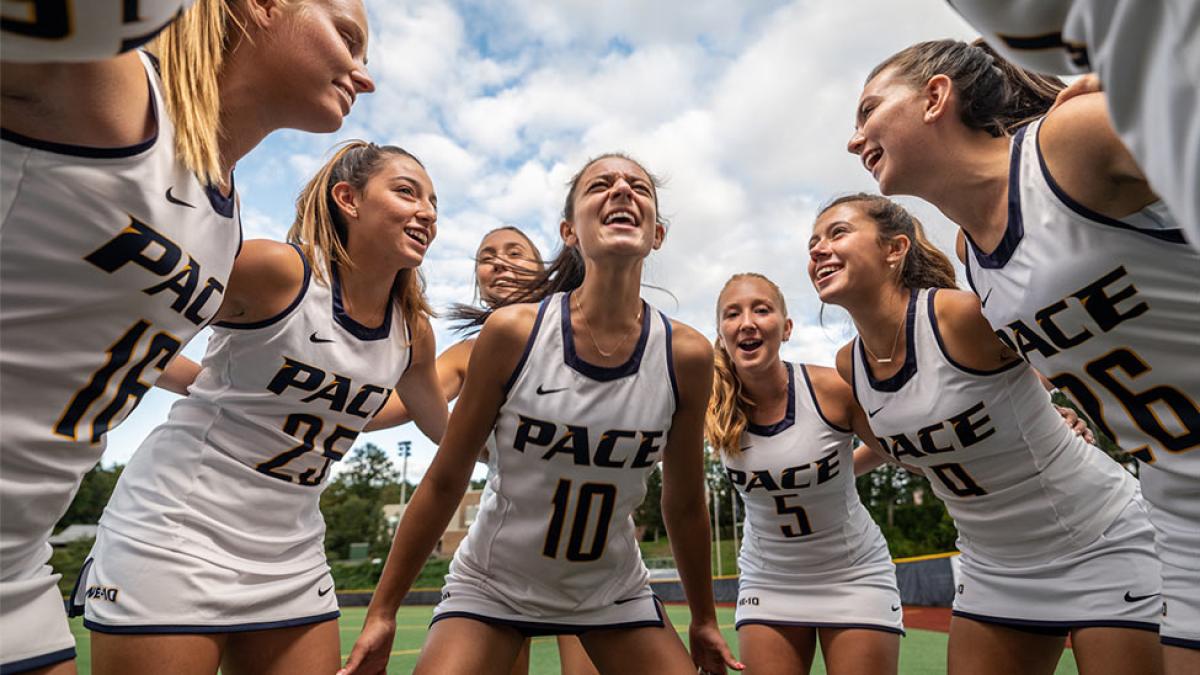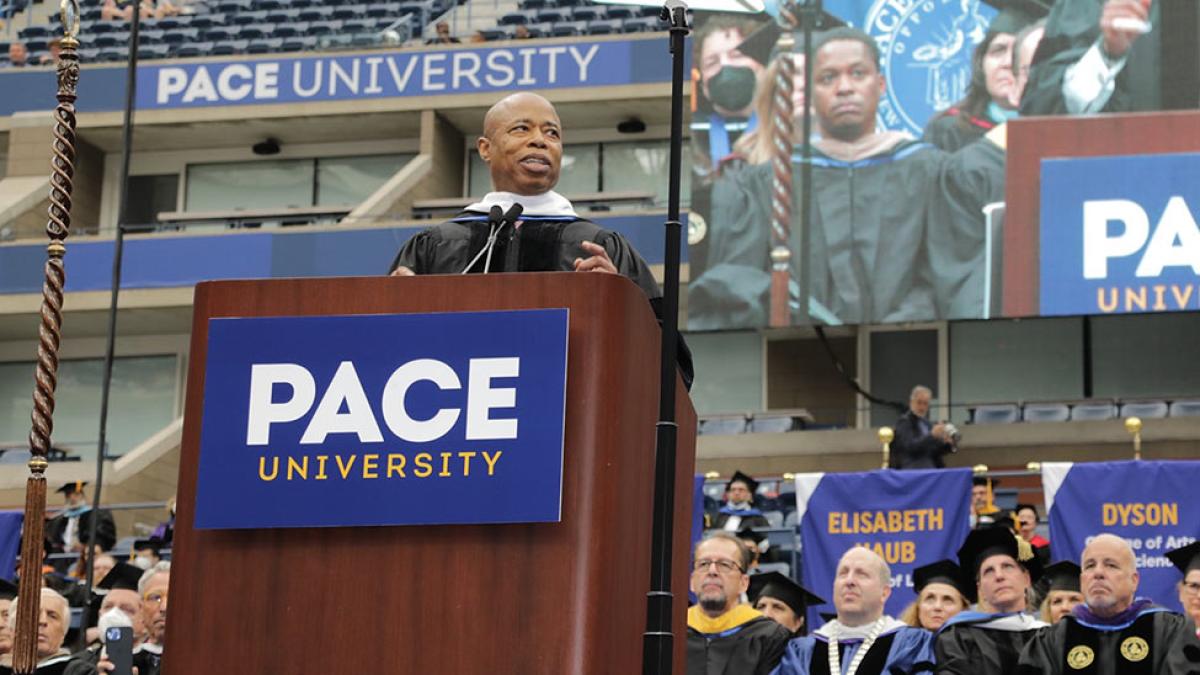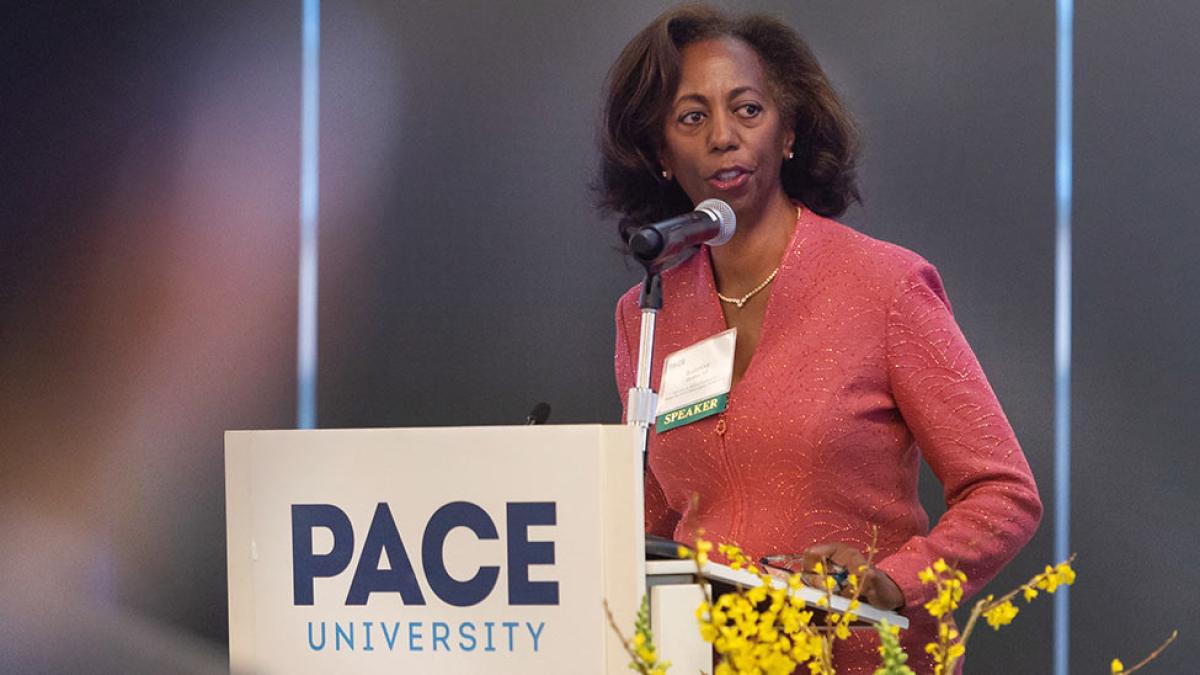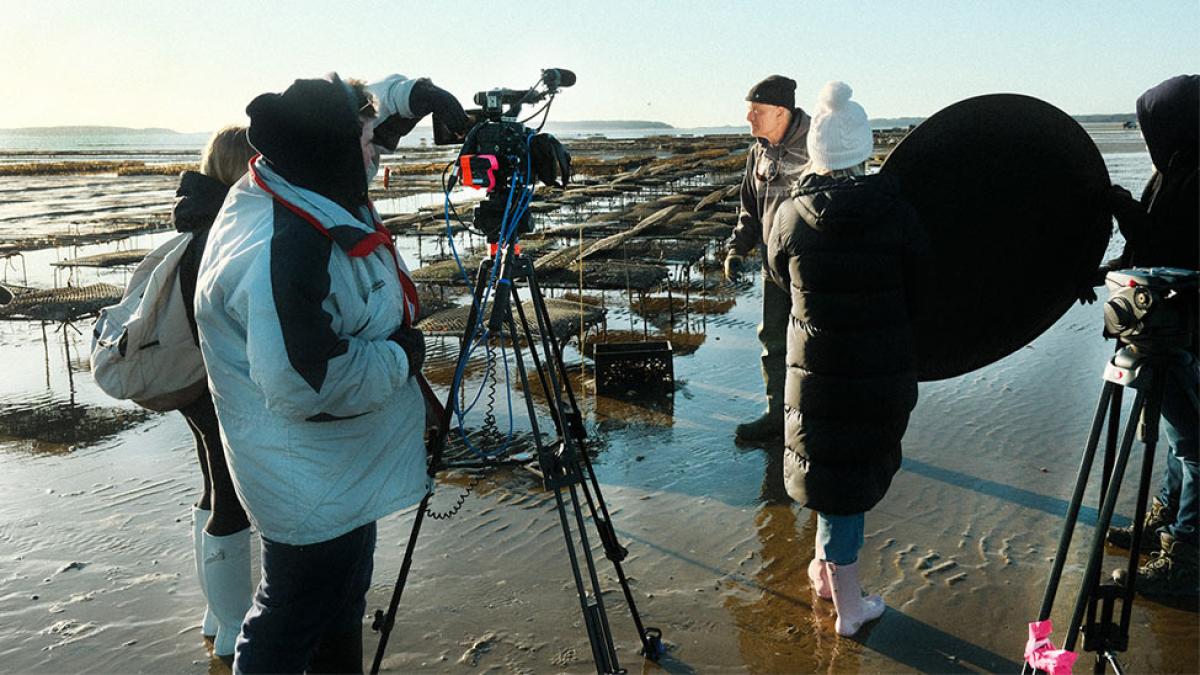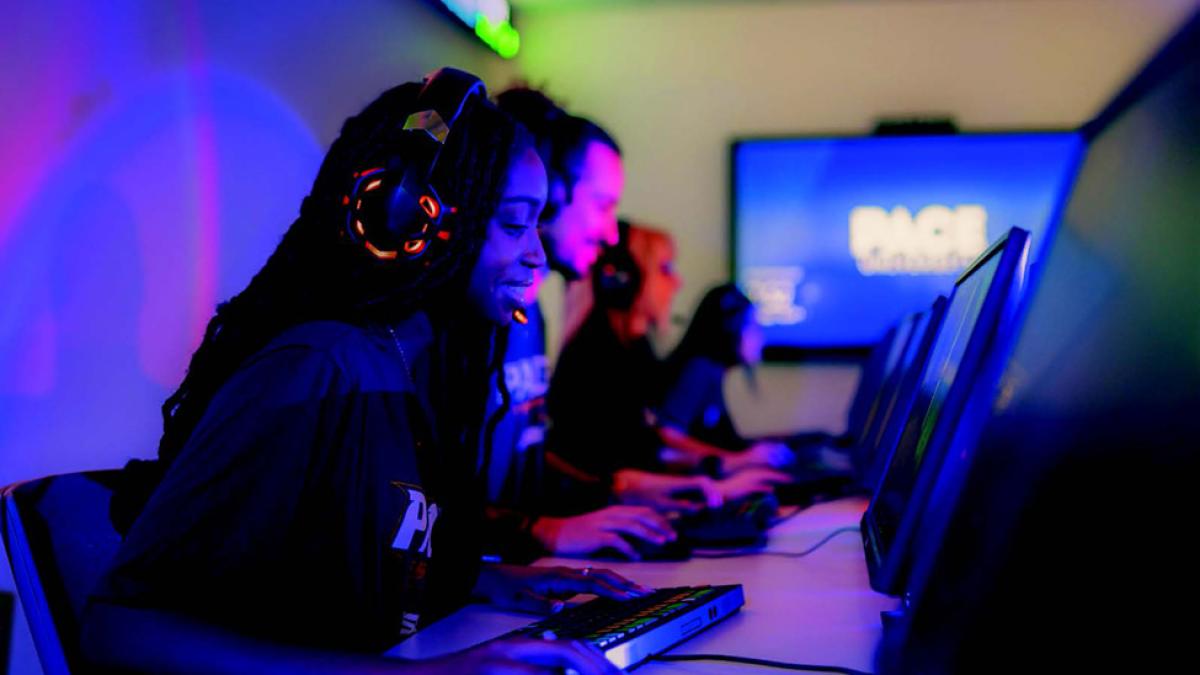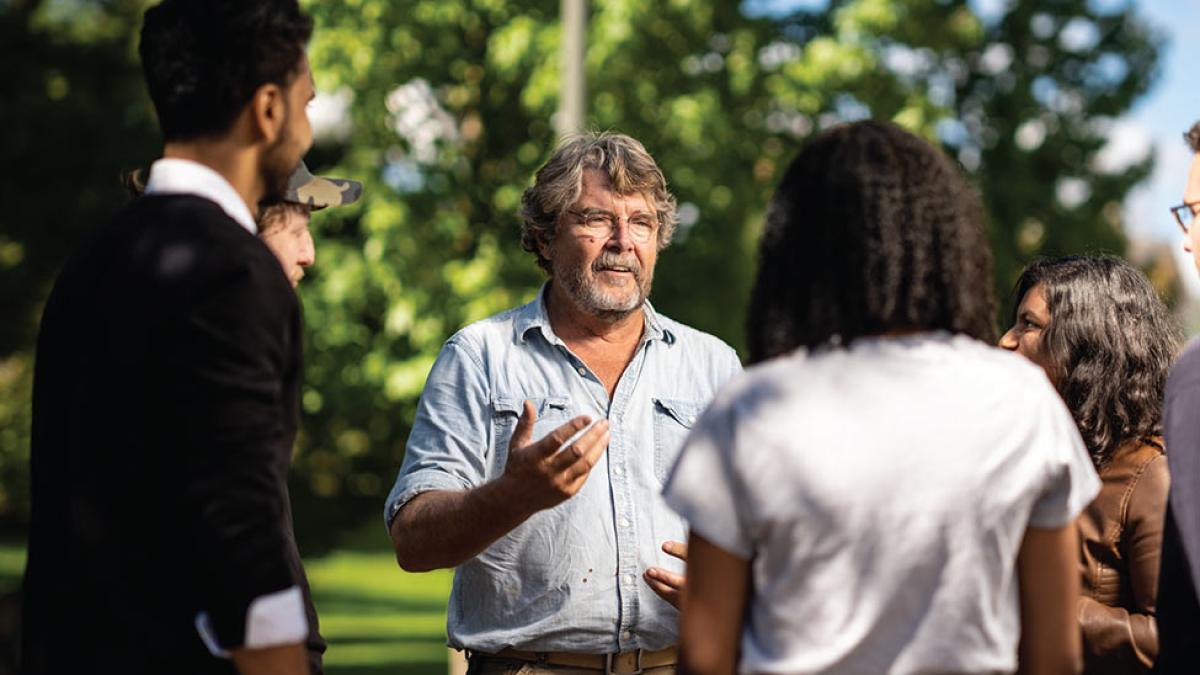We're reaffirming our commitment to cutting-edge academics, moving up in the rankings, earning grants, and paying it forward. All this and more in the latest edition of 10 Things to Inspire You.
How the Pandemic Has Changed Talent Management
The Great Resignation. Remote Work. COVID-19 and the future of work. You’ve heard it all, but what does it mean? Talent Management expert Ibraiz Tarique, PhD, breaks down the ever-evolving relationship between employers and the people who truly make workplaces tick.


Since March 2020, our workforce has undergone a number of dramatic short-and-long-term shifts; ranging from the sudden, necessary move to remote work, to larger questions surrounding work-life balance and the overall relationship between employers and talent.
Lubin Professor and Management and Management Science Chair Ibraiz Tarique, PhD, is well-positioned to tackle many of these vital questions. He is an expert on global talent management, (the science behind developing and maintaining a team of high potentials, A-players, Stars and top-notch professional contributors), and is the author of several textbooks, including Contemporary Talent Management: A Research Companion, and The Routledge Companion to Talent Management.
We sat down—or rather fittingly, chatted over Zoom—with Professor Tarique to discuss the emerging field of talent management, workplace changes accelerated by pandemic, and what work might look like in our (hopefully) post-COVID future.
Broadly speaking, what is talent management?
Talent management is a relatively new field, which has different meanings to different organizations. It’s a continuum with two extremes. One is what we call the exclusive approach to talent management, which is when you focus on a small group of high potential employees, stars and A-players, and employees that are more valuable in their performance—what they bring to the organizations. On the other side, there is the inclusive perspective, where the argument is that everyone is talented, and should be managed based on the skill set they have. That in turn becomes HR, and some people have argued that talent management is a new term for human resource management.
My philosophy, and the way I teach talent management, is that it’s a subset of human resource management that focuses on your most valuable employees. The argument is based on the exclusive approach—that is talent should be managed according to his/her contribution to the organization and that there is a small group of highly valuable employees in key or strategic positions that differentially contribute to organizational success. Similar to Pareto’s Principle or the 20/80 rule, where 20% of the employees bring 80% of the revenue or profit.
What impact has the COVID-19 pandemic had on talent management?
Like most other things in human resource management, the use of technology and mobility really impacted how we manage people and how work is done. I think there are important takeaways post-COVID:
- Through technology and remote work, talent is geographically dispersed. Before, you would bring talent to work, now you can take work to talent. If you want talent that is in a different country or location, you now can, through technology, take work to that person, develop that person, and retain that person. This trend was there for a while, but COVID accelerated this trend.
- It’s my observation that employees have more control over their work now—how they work and where they work. If you’re a high potential employee or high performer, you’re controlling the conversation. You’re dictating the terms. Employers are now listening.
- Organizational culture. There has been a discussion going on—Harvard Business Review has had a lot of articles around this—the question of, what is organizational culture now? Culture had been people together in meetings, in the same buildings—but if that’s disappearing, the organizational culture is changing and evolving. We still do not know what the new culture looks like. It’s evolving.
Talent analytics will play a larger role. Everything is being measured all of the time. The question is, what do we do with this data? Real-time decisions will be increasingly made on data.
What are some ways that companies and can adapt to these radical shifts in the way work is done and talent is managed?
From a company perspective, there’s now a focus on virtual leadership. We are moving from a traditional leadership model, to virtual and hybrid. How do you develop virtual leaders? And who will be able to manage and engage a geographically dispersed workforce and talent through technology?
From an academic perspective, we’re developing new content. We’re thinking about how to manage and lead people who you’re not meeting and observing behaviors throughout the day—because one aspect connected to that is also the issue of performance management.
Traditionally, performance management has had two components: results and behaviors. Now with remote and virtual work, observing workplace behaviors is challenging. Whether that’s negative or positive is debatable, but there is a lot of focus on results. But focusing on “results” takes personality and other individual traits out of the equation. When I teach performance management, I mention something called the likeability factor—meaning, sometimes people get away with lackluster results because they’re likeable. But in a virtual setting, this likeability factor can disappear and outcomes, or results, become extremely important. Perhaps this is a good trend.
Over the past year, there have been a lot of headlines surrounding labor shortages and “The Great Resignation.” Can you discuss these trends from a talent management perspective?
The data is extremely new, but we’ve had talent shortages for a long time. There is no shortage of research on “talent shortages”. During the 2008 recession, unemployment was high, yet companies were still saying that they couldn’t find talent. The talent shortage is there all the time, one of the disconnects there is how fast jobs are changing and how quickly people can learn and develop.
What the pandemic did was move people indoors and remotely to work, and a lot of social and psychological aspects came in. Working remotely has caused a lot of stress and burnout—people end up working more and questioning the meaning of their work. Most homes are not designed for working from home. Most families are not used to spending so much time together. People need space, more specifically Gen Y and Gen Z.
For talent management, it means that for any organization, retention is critical and retaining talent becomes a key strategy. In my book, I argue you must customize careers for the current employees. You have to pay attention to each employee to see how the company can help them learn, develop, and grow. I challenge the traditional philosophy of “what can you do for your employer” to “what can your employer do for you?” When you have that conversation as an employer, you might ask: how can we help you move forward in your career? When you start the conversation from that angle, people get motivated, engaged, committed, and eventually stay.
Succession planning is also very important. There is this myth that people have to stay with companies for a long period of time. Turnover is part of life. People will leave. Some jobs, Wall Street jobs for example, could have short-time windows. The key for both the employer and talent, is how to maximize returns within those the short time periods.
For any organization, retention is critical and retaining talent becomes a key strategy.
What do you envision the future of work to look like in the next five years or so?
COVID accelerated the change of hybrid work. You will see more remote work, depending on the jobs. The question regarding having your top talent working remotely will be different—companies will figure out ways to retain talent that is not physically near them.
Talent analytics will play a larger role. Everything is being measured all of the time. The question is, what do we do with this data? Real-time decisions will be increasingly made on data.
Additionally, we have allowed companies to come into our homes, through technology. The work-life balance line between privacy is blurring. Companies are going to play this different role in people’s lives, organizations will have to become like a family member in some way. Connected to that is this increased focus on employee health and well-being—that will continue.
Having said that, I still believe the traditional model will hold. People will come back to work, because the social need for connection will supersede work needs. And for some work, you just have to be in close contact. Secondly, as I mentioned earlier, the home is not designed for working. Our society is no structured that way—which can lead to mental and emotional issues, which eventually will come back to the company.
The answer, like many things, lies somewhere in the middle.
More from Pace
Researchers at Pace dive deep into hip hop’s emotional undercurrents.
Title IX is best known for transforming collegiate athletics in the United States—and, from there, all of sports. But that was not its original goal. Title IX of the Education Amendments of 1972, as it is formally known, was designed to open doors for women across higher education. Learn more about it.
Ahead of the Class
At 14 years old, Shahab Gharib is not your typical Pace student. Here is his extraordinary story.
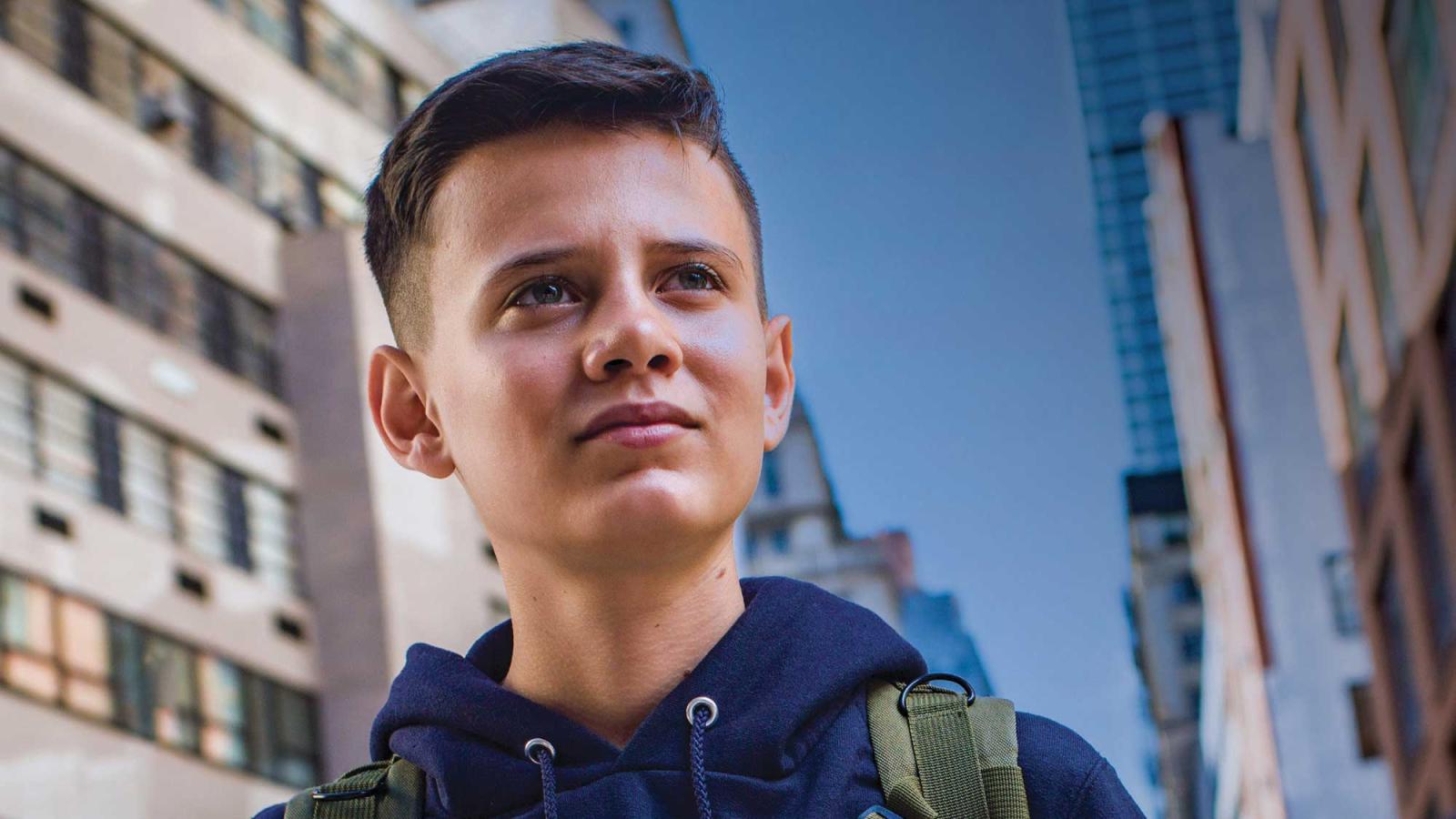
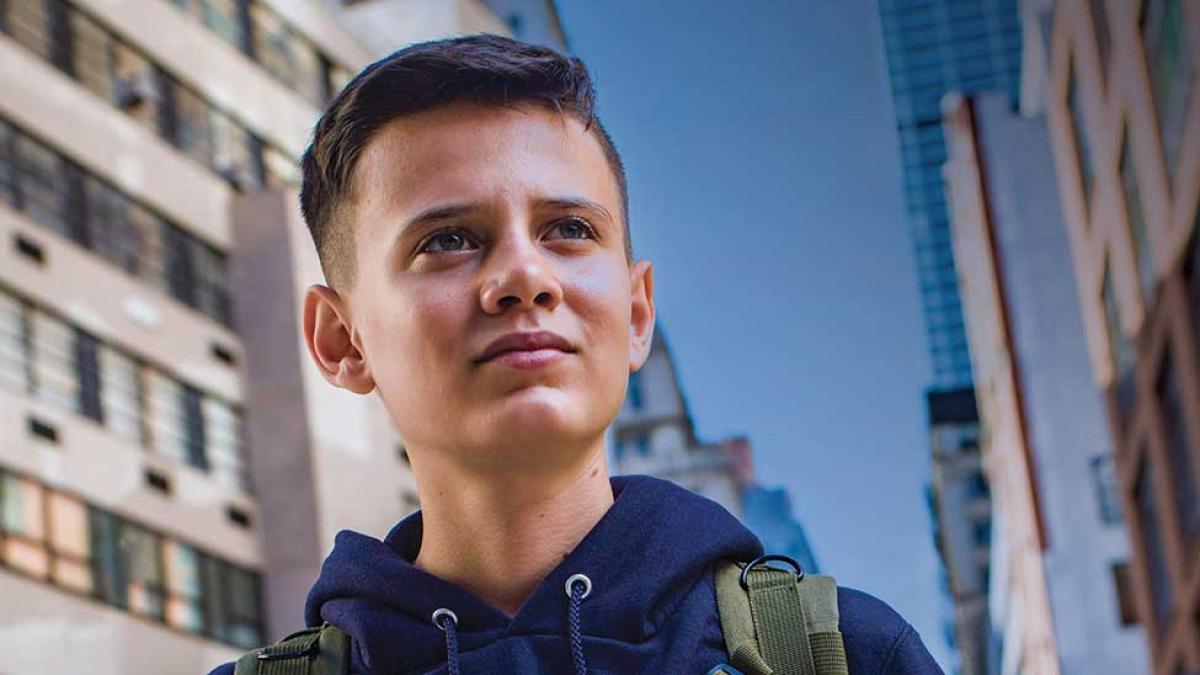
When Pace University’s Admissions team received Shahab Gharib’s application, they were thoroughly impressed. Here was a student with excellent academic credentials and a wealth of extracurricular interests—someone who would certainly make a positive impact in the Pace Community.
Yet, when it was the Pforzheimer Honors College’s turn to look over his application, they noticed something extremely odd. A clerical error? They sought to investigate.
“They called back to confirm Shahab’s date of birth,” says Bardia Gharib, the student’s father. “I said no, it’s not a typo—he’s really 12 years-old.”
This is a common through-line for Shahab, who began his undergraduate studies at Pace at the age of—again, not a typo—12 years old.
“At first, people are kind of shocked,” he says. “But after a while, I’m like anyone else.” Shahab Gharib, despite his modest, easy-going demeanor, is certainly not like anybody else.
Born in Bruchsal, Germany, Shahab moved with his parents to Hollywood, Florida, when he was a young child. Even then, it was clear that he was unusually gifted. For one, it seemed that he was already devouring books well-beyond his reading level. His teachers and school administrators took note of Shahab’s clearly advanced intellect, and in fourth grade, he moved to a gifted school. Then, as a fourth-grader, Shahab had the opportunity to take the PSATs—a trial run for the SATs, typically taken by high school juniors a few months prior to the big test. Shahab scored a 1250, in the 99th percentile for his age group.
“That was the ‘OK’ moment,” his father says. “We knew he was gifted, but this was clearly something else.”
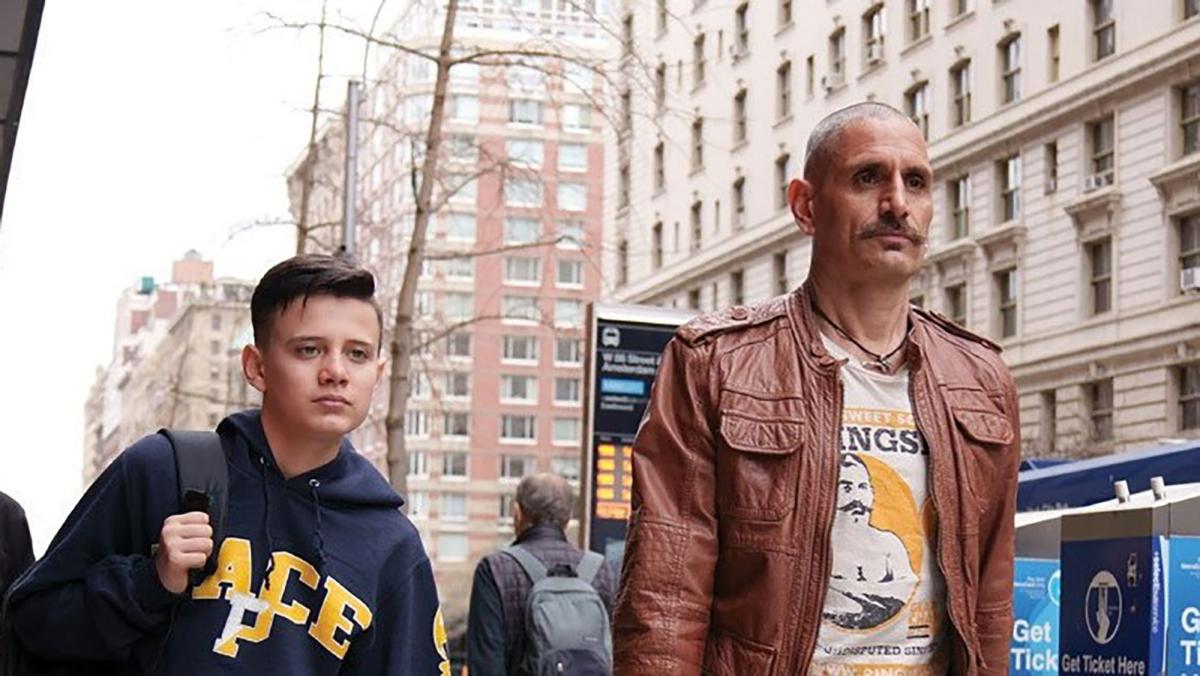
Getting Ahead
Talking to Shahab, you instantly realize that he is, above all, curious. It’s likely this insatiable hunger for knowledge that made Shahab excel beyond his peers, even in middle school. While most sixth graders, for example, might be pining to play video games after a school day filled with algebra and world history, that wasn’t exactly the case for Shahab.
Instead, while not in the classroom, he started taking electives for high school credit through Florida Virtual School. He also made it a point to finish every book he picked up— whether that be popular favorites like the Harry Potter series (which he finished in first grade), personal favorites such as Bryce Courtenay’s The Power of One, or dense non-fiction such as The Washing of the Spears, a comprehensive history of the Zulu nation.
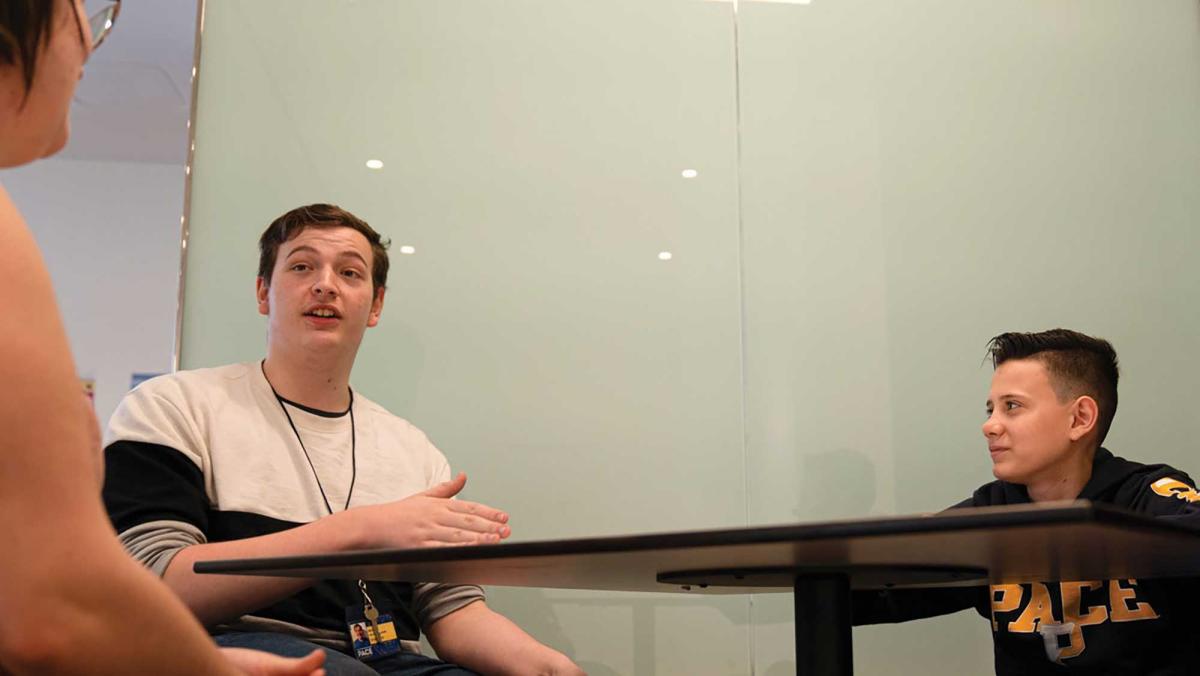
“I may have a slight reading problem,” admits Shahab.
Eventually, Shahab took so many classes through Florida Virtual School that he had, in effect, completed high school at age 12. He and his parents had a decision to make—should he actually go to high school and study subjects he had already mastered? Or was he ready to keep challenging himself intellectually and make the leap to college?
“We had said if he was going to go to college, it had to be New York,” said Bardia, referencing the endless cultural opportunities offered by the city, as well as a “real-world” crash-course the frenetic nature of Manhattan inevitably provides.
So, he applied to Pace. And he was accepted. Through credits from the Florida Virtual School and CollegeBoard CLEP exams, he even entered with 12 college credits.
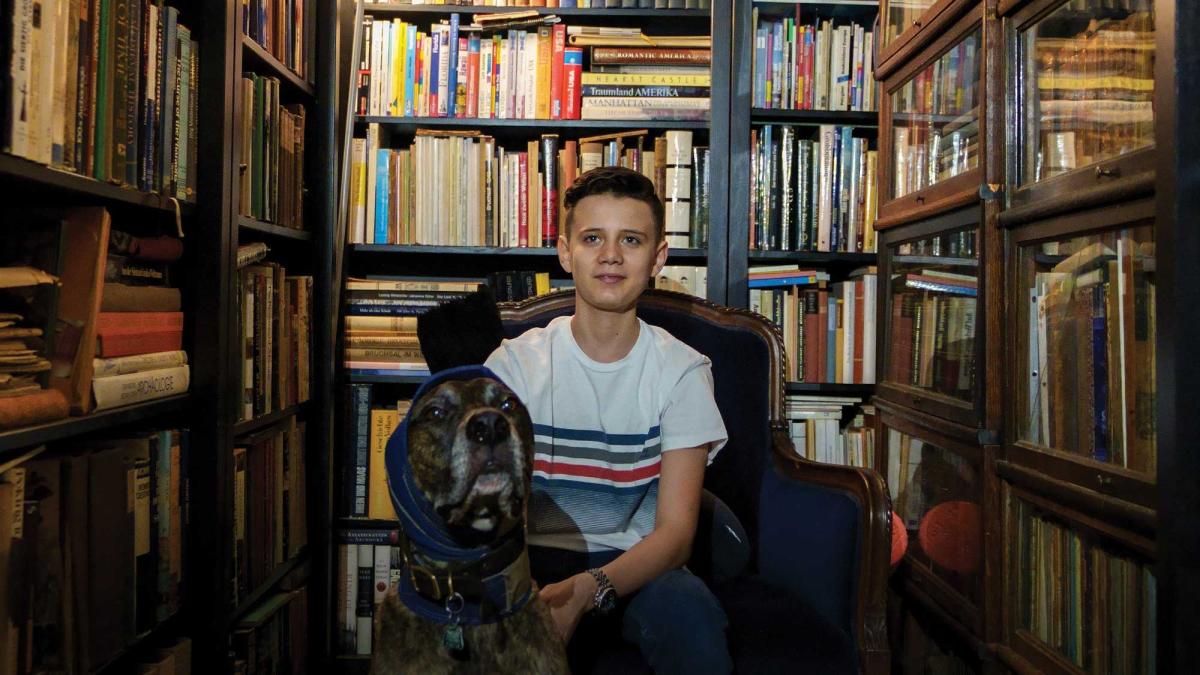
In the Classroom
In some ways, Shahab’s time at Pace has been like that of any other student. Like the rest of his peers, he diligently balances his time between a full course load and extracurriculars. He’s majoring in history, and has greatly enjoyed his courses in other disciplines, including economics, computer science, and creative writing.
He’s earned praise from professors with whom he’s developed strong relationships, including his English professor, Eugene Richie, PhD, who is also Pace’s director of creative writing. Richie has been sincerely impressed with—as he describes— Shahab’s maturity and sense of connection. Given his stellar work, Richie recommended him for the Andrew W. Mellon Pace Storytelling Fellowship for Equity and Inclusion, which Shahab was recently awarded. As part of the Fellowship, Shahab will be participating in a fully paid internship this summer with a creative organization that matches his future interests.
“I got a call from the Honors College director who said Shahab wasn’t 18 and was going to enter college early,” Richie says. “He came to class, and he was brilliant. He talked all the time, and he really engaged with the material.” After enrolling in a modern and contemporary international poetry course—in which, Richie notes, Shabab provided a unique perspective given his early upbringing in Germany—he then signed up for an Honors course focusing on poetry, memoir, and creative fiction.
After writing a few poems, the class moved onto the memoir, during which Shahab revealed his story more in depth—to the great surprise of his classmates and even his professor, who had assumed he was closer to 18. “When he did the memoir, he revealed to the other students that he could’ve gone to high school but decided that he’d rather start college because he was able to do it,” said Richie. “Then I realized, wow, he must be 13 or 14 years old—I had no idea!”
“If someone tells him ‘You can’t—you’re too young, you won’t be able to’—that’s a cue for him, and he’ll prove them wrong,” —Bardia Gharib.
…And Beyond
If your impression is that Shahab camps out in the library 24/7, you’d be wrong. While clearly prolific in his studies, he’s also made time for a number of activities outside of the classroom. Last fall, he got involved with Pace’s student-run radio station, WPUB, and started hosting his own radio show. Titled Books, Ballads, and Blasts from the Past, the show uses reading and history as a conversation starter and introduces the world of Shahab to a wider audience. And, as WPUB asks: Everyone always wants to know what a 13-year-old has to say about history, books, and all genres of music, right?
“Alliterations are a running joke in my family,” he says, explaining the title of his radio show. “The experience so far has been really great—I usually bring a friend who has a different perspective on a lot of things, and it has been a lot of fun.”
He’s also punching above his weight—literally. The sport of boxing has long been a family endeavor. Bardia, a boxer who ran a boxing gym in Bruchsal, has been a source of inspiration and encouragement for Shahab. During their time in Florida, the Gharibs were members of a boxing gym, where Shahab met Max Schillinger, who is now himself a student at Pace’s Lubin School of Business. The two bonded over their admiration of hip-hop artists, which Schillinger joked that Shahab was definitely too young to be listening to.
“Back when we met, he told me he was in 10th grade,” said Schillinger. “He was 11 years old. I was in disbelief.”
The two ended up keeping in touch after the Gharib family left Florida for New York City, and Schillinger was entering his senior year of high school. Schillinger, unbeknownst to Shahab at the time, was also looking to study in New York City and coincidentally was also accepted to Pace last spring. Although the two didn’t plan to attend college together, their continued friendship has blossomed.
“We ran into each other in the elevator on the second day of school,” said Shahab. “I said, Max! We need to do some boxing.”
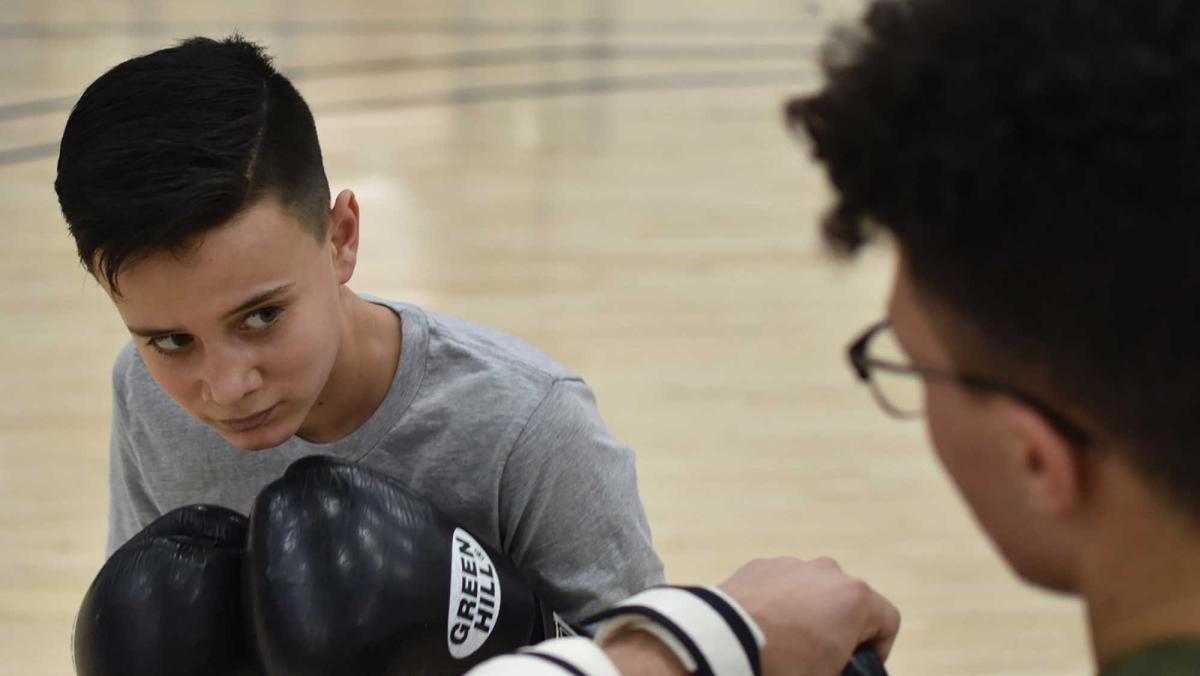
And so they have. The pair recently started Soulfighter NYC, a Pace boxing club that meets twice a week in either the Pace gym or in City Hall Park. Each class spans about an hour, and is led by Bardia, who teaches students the basics of boxing, footwork, and strategy—while making sure nobody is skimping on the push-ups. At a recent session, Shahab, despite being clearly younger than the other dozen or so other Pace students, did not seem remotely out of place. In fact, while sparring with his partner, he was both focused on his own footwork and technique and encouraging of his partner, once again suggesting a maturity beyond his years. At the end of the training session, he lay down on the floor exhausted, in a way only possible after a grueling but rewarding workout.
Schillinger, while not surprised Shahab is able to excel in this environment just like he did in Florida, is no less impressed. “What seems like an abnormality is possible, if you look at where hard work can get you,” said Schillinger.
Going Places
With Shahab, there is often a question about his future—if someone who was born in 2008(!) has been able to accomplish so much already, what will he be able to do by 2030? 2040? And although some might want to put grand aspirations on his shoulders, Shahab, with the help of Bardia, seems to be quite adept at not looking too far down the road. Because he is looking to graduate next year—early of, course— his primary concern is focusing on his plans immediately after graduation. After a few long conversations with his family, professors, and mentors, he has decided he would like to attend law school. He recently applied to Pace’s Elisabeth Haub School of Law, where he hopes to take advantage of the 3+3 program, in which students can earn their BA and JD in only six years. Although he’s not entirely sure what he’d like to study, he notes the environmental law program, currently ranked the best in the country, holds great interest.
Shahab is also excited for another element of a typical university experience. While it’s not unusual for college students to live at home, it is a bit unusual for their parents to regularly accompany them to campus. Because of his age, Shahab who lives with Bardia and mom, Amorita, on the Upper West Side, goes back and forth to campus with Bardia. He acts as a chaperone of sorts—bringing Shahab down to One Pace Plaza each day on the subway, providing guidance, and helping ensure Shahab grows socially and culturally as well as academically.
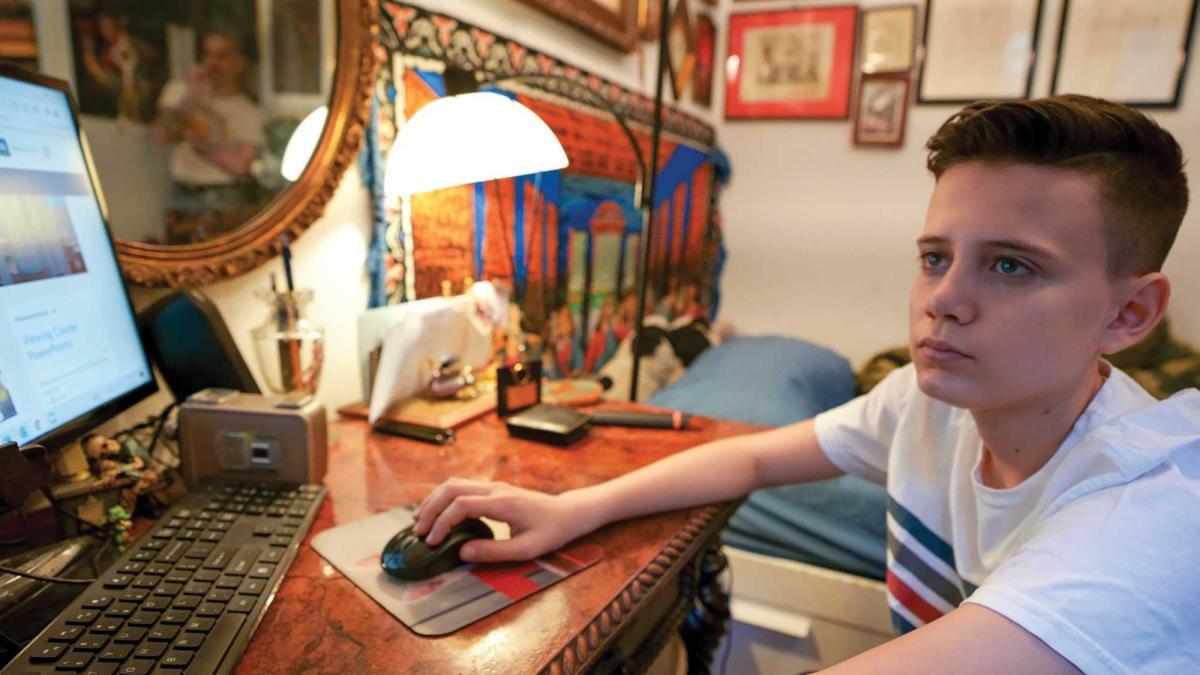
At law school however, the plan is for Shahab to further his growth and live in the dorms. Although Bardia will certainly be a little bit sad to not be in the company of Shahab each and every day, he’s also incredibly proud of what his son has been able to accomplish. He looks at Shahab living without parents as an essential aspect of growing up. And even though Shahab will only be 15 when he starts law school, it’s safe to say his life experience is a bit beyond his years.
“People ask, ‘You bring your son to school?’” jokes Bardia. “No, my son brought me here.” And his son is clearly going places. “If someone tells him ‘You can’t—you’re too young, you won’t be able to’—that’s a cue for him, and he’ll prove them wrong,” Bardia says.
Shabab smiles. “I may be a tad competitive,” he says.
More from Pace Magazine
Through the U.N. Millennium Fellowship, three Pace students are innovating the way food insecurity is addressed on campus with the Fare Trade program.
With the help of a nearly $2M federal grant, this inaugural cohort of nursing students is poised to change the face of patient care.
On Monday, May 16, Pace held the largest Commencement ceremony in our history to celebrate the classes of 2020, 2021, and 2022 at the USTA Billie Jean King National Tennis Center in Queens, New York.
Leadership Letter: Summer 2022
Across our campuses, we’re looking to the future—innovating new programs, forging new partnerships, preparing our students for the workplace of tomorrow. It’s time for Pace Magazine to get a fresh new look and feel, too.
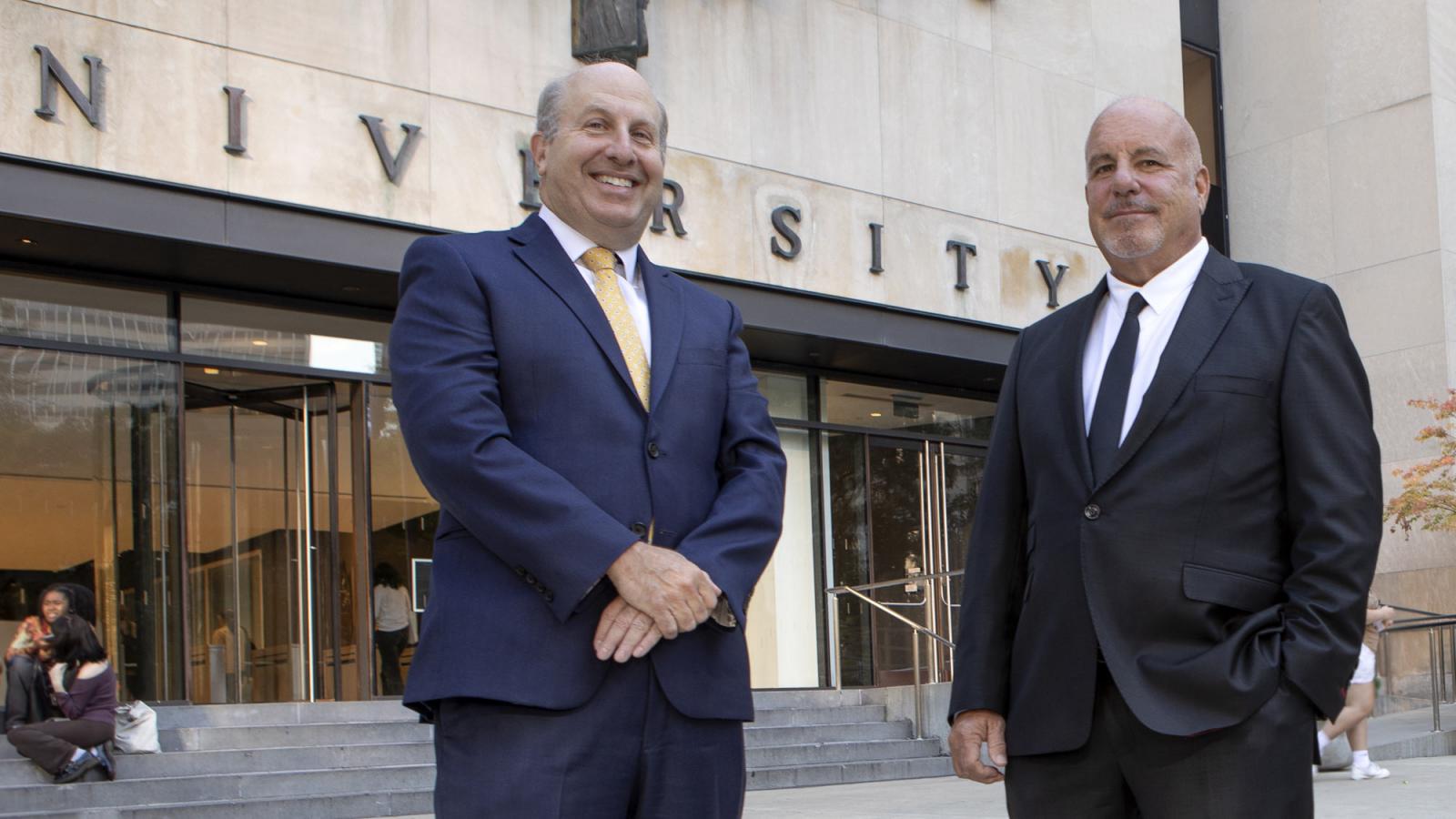
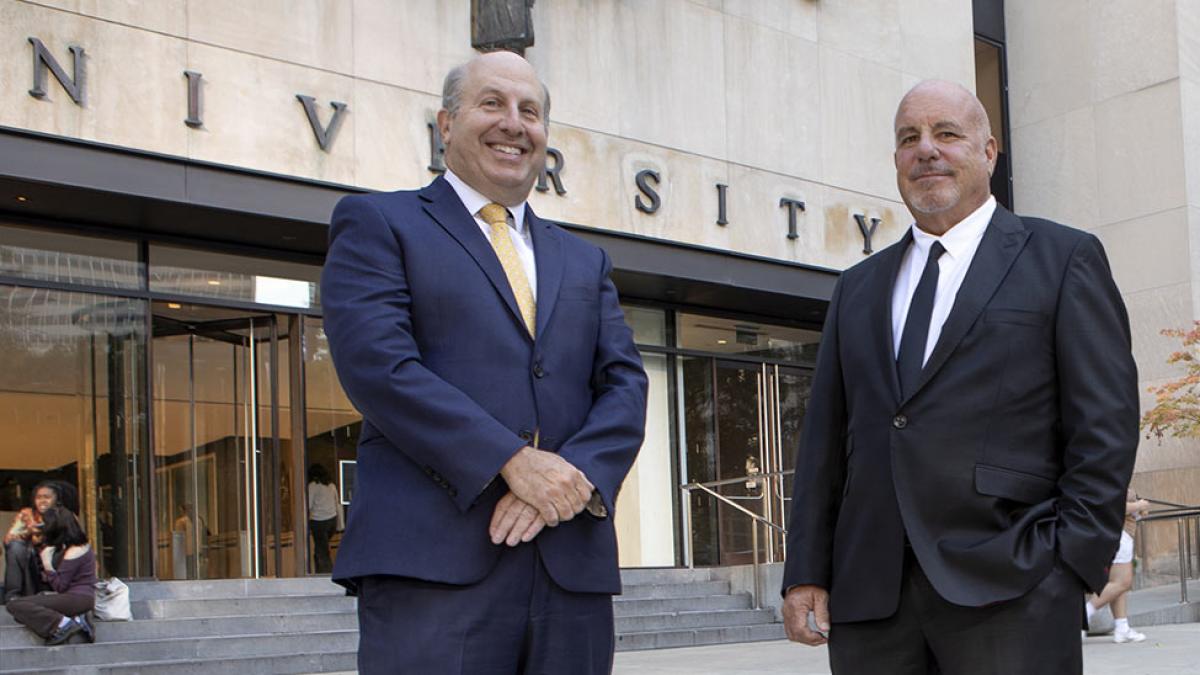
Welcome To The New Pace Magazine.
Across our campuses, we’re looking to the future—innovating new programs, forging new partnerships, preparing our students for the workplace of tomorrow. It’s time for Pace Magazine to get a fresh new look and feel, too. You can see what the print issue looks like here.
This redesign is part of the new brand platform we launched last year, which no doubt you’ve noticed in other communications from our University. We call it “Go-Getters,” and it’s a new framework for telling the Pace story of success. As alumni and friends, you know well that we’re a hard-working, ambitious community of doers and strivers who are determined to get ahead. This new brand platform—and its visual expression, which you’re seeing on these pages—creates a framework for us to tell our story, and it brings a powerful and dynamic look and feel to everything we do.
In this issue, you’ll read about many of those doers and strivers, from a remarkable 14-year-old student who just finished his first year as a history major in Dyson, to students working to fight food insecurity in their community, and first-gen students eager to enter the nursing profession.
You’ll also see highlights from our extraordinary Commencement 2022, when we celebrated the classes of 2022, 2021, and 2020 in the biggest and highest-profile event we’ve ever put together.
We went to one of the largest venues in the region—the USTA Billie Jean King National Tennis Center in Queens— and we welcomed 16,000 family and friends to help celebrate 4,000 graduates from our six colleges and schools across our three campuses and three graduating campuses. It was a beautiful spring day, headlined by a visionary speech from New York City Mayor Eric Adams, heartfelt advice to our Lubin School of Business graduates from banking and philanthropy leader Baroness Ariane de Rothschild ’88 MBA ’90, and wise counsel to our Haub Law grads from US Representative Grace Meng. It was a day to be reminded why Pace is such a special place.
We’re excited to get that word out to the world—and we hope you enjoy reading all about it in this reinvented magazine.
With Pace pride,
Marvin Krislov
President
Rob Sands, JD ’84
Chair, Board of Trustees
More from Pace Magazine
For more than 30 years, Sabrina A. Griffin's career focus has centered on promoting diversity and inclusion through corporate ranks. She's bringing this experience to her new role as the first-ever Leadership Council Chair of the new Pace University Alumni Association.
Through the U.N. Millennium Fellowship, three Pace students are innovating the way food insecurity is addressed on campus with the Fare Trade program.
At 14 years old, Shahab Gharib is not your typical Pace student. Here is his extraordinary story.
Summer 2022: 10 Things to Inspire You
We're reaffirming our commitment to cutting-edge academics, moving up in the rankings, earning grants, and paying it forward. All this and more in the latest edition of 10 Things to Inspire You.

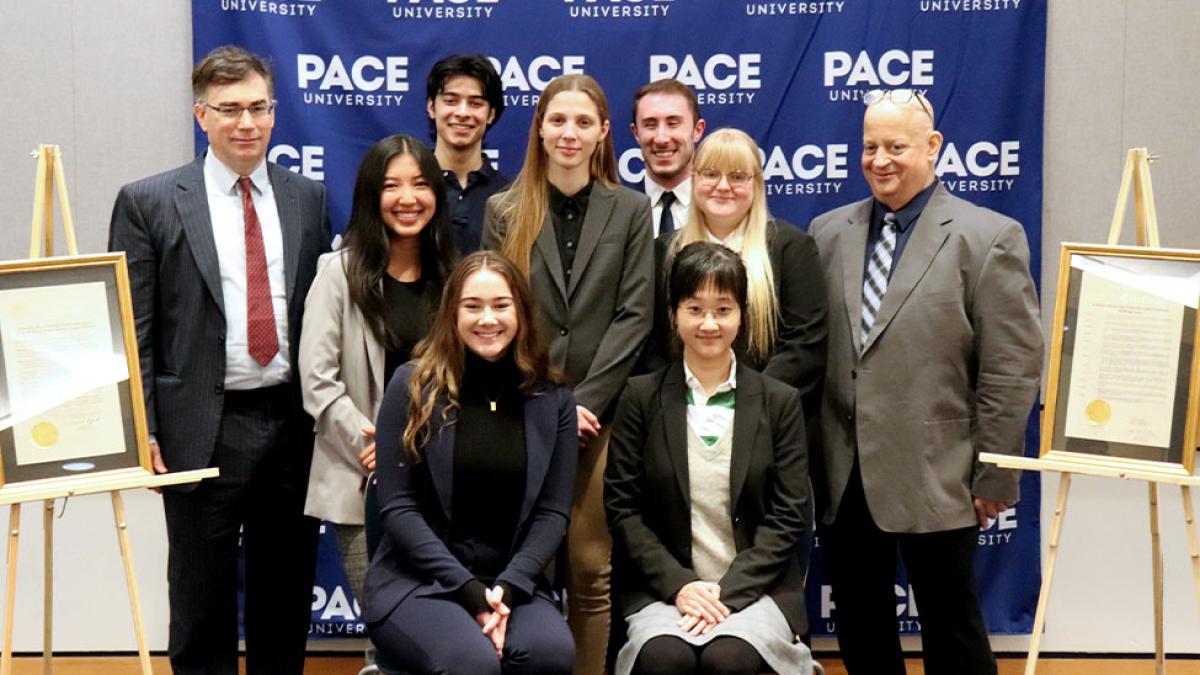
#1 in the Nation
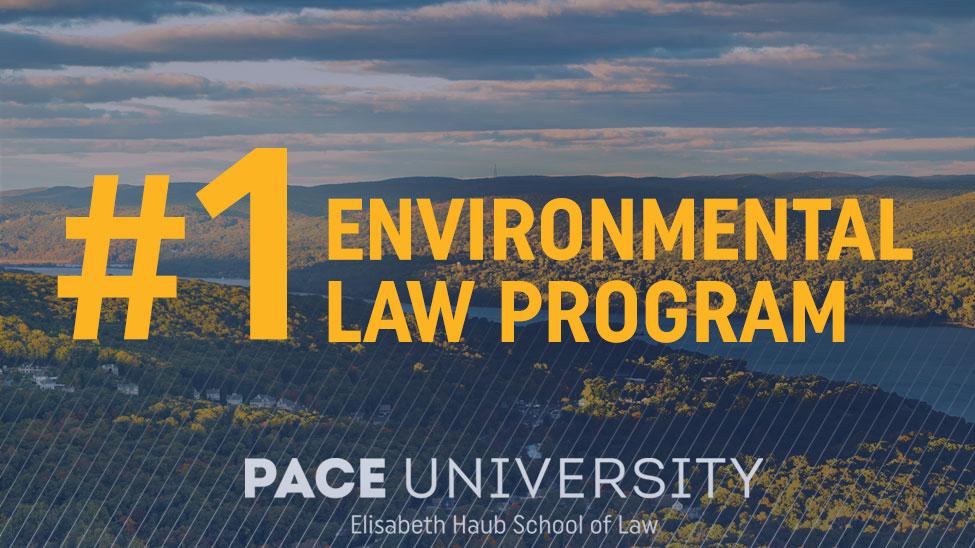
Pace University’s Elisabeth Haub School of Law is once again ranked number one in the country for Environmental Law by the latest U.S. News & World Report rankings. This is the second year in a row, and the third time in four years, that Haub Law has received the number one ranking. The program continues to recruit top faculty, establish leading-edge programs, and attract students who seek to become the environmental law leaders of the future.
2. RADical Health
Pace is leading the charge when it comes to managing mental health—and is proud to be a partner of RADical Health, an innovative skill-based resilience program from the Radical Hope Foundation that empowers students to work through challenges before reaching a crisis point.
3. Winner, Winner
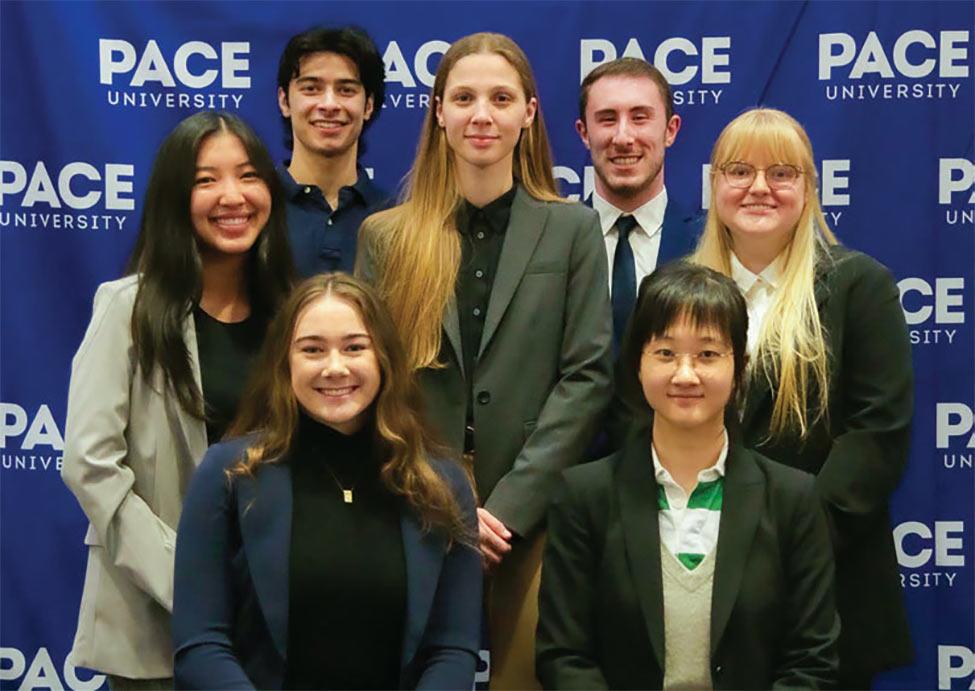
Pace’s Federal Reserve Challenge Team made history at the 18th Annual Federal Reserve College Challenge, winning the national title for the fifth time. With the victory, Pace now has won five of the last seven titles and has the most victories of any team in the history of the competition, surpassing Harvard University’s four wins.
4. Healthcare Access for All
Physician Assistant student Elyse Hopper was selected as a Student Delegate for the American Academy of Physician Associates (AAPA) House of Delegates and represented Pace at this year’s AAPA conference. In her role as a Delegate, Elyse worked to increase the access to healthcare to the sick and underinsured.
5. Expanding STEM Education
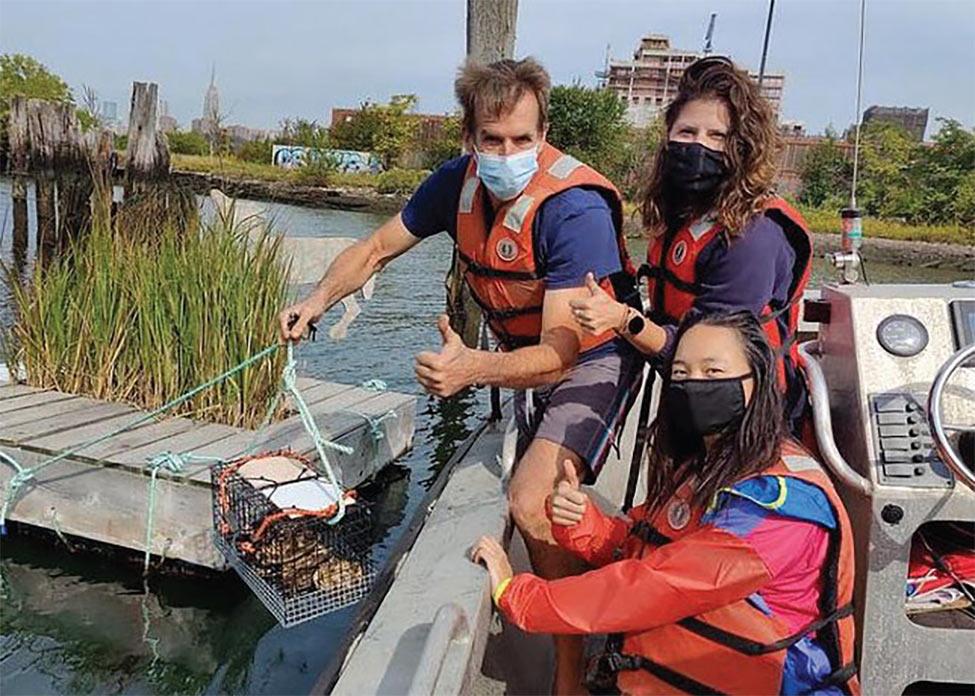
Pace’s School of Education and the Elisabeth Haub School of Law have been awarded a grant from the National Science Foundation to expand STEM education for K–12 students in NYC. Pace undergraduates, overseen by JD and LLM law students, will provide access to dynamic and immersive learning experiences for under-represented communities.
6. A Tribute to DJ
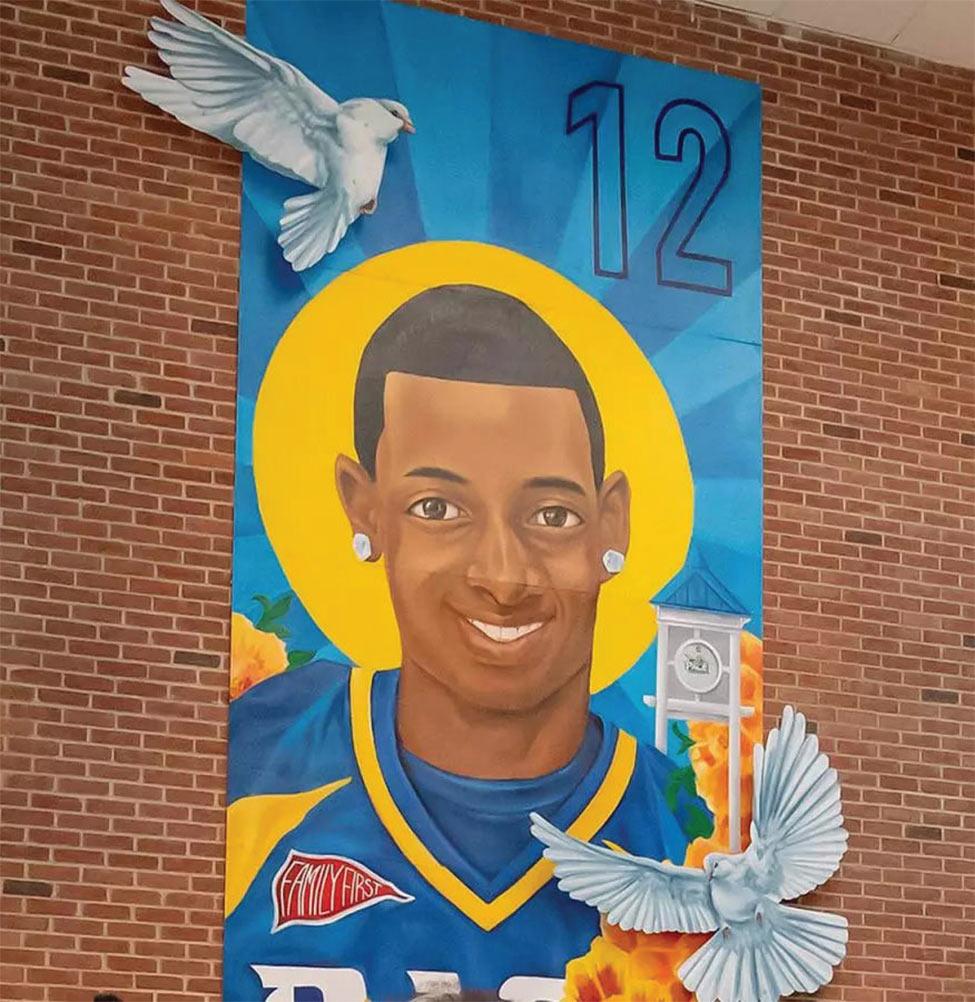
In an effort led by Pace students Irach’e “Shea” Teague ‘22 and Ja’Rette Mungin ‘21, a newly commissioned mural of Danroy “DJ” Henry, a student who was shot and killed by a Pleasantville police officer in 2010, was installed on Pace’s Pleasantville Campus during the second annual Social Justice Week. “This is my most heartfelt piece to date,” shared artist Brittney S. Price. “I’ve done memorial murals before, but not for the subject’s direct community for unifying and healing.”
7. ESG Thinking
The Elisabeth Haub School of Law recently announced the launch of the Haub Sustainable Business Law Hub (say that 10 times fast!). The Hub will serve as an incubator, student training program, and think tank devoted to addressing global sustainability challenges through policy, research projects, relationships with the business community, and capacity building in private environmental governance.
8. Addressing the Nursing Shortage
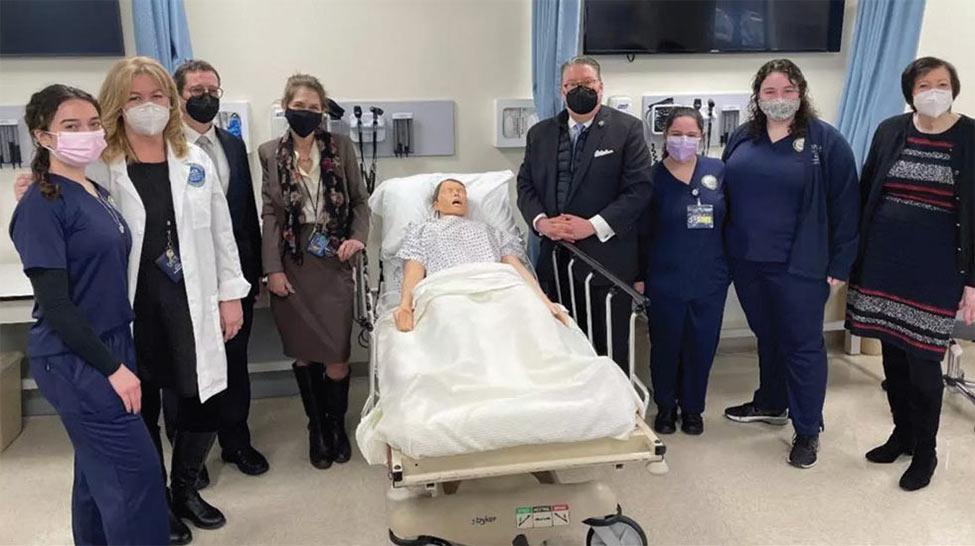
New York State Senator Pete Harckham visited Pace’s College of Health Professions for a tour of its clinical simulation labs and held a roundtable discussion on addressing New York’s critical need for nurses and other primary care professionals. “It is critical that we encourage and reward people to join the nursing profession, which needs rejuvenation and reinforcements,” said Senator Harckham.
9. Empowering Queer Leaders
Pace’s LGBTQA+ Centers have received a $23,000 grant from the Leonard Litz-Foundation to help empower the next generation of queer leaders. The grant will fund Pace’s annual Q-Camp leadership retreat and a new program, the TGNCNB (transgender, gender nonconforming, nonbinary) and QTPOC (queer and trans people of color) Leadership Series.
10. $1.2 Million Grant for SOE
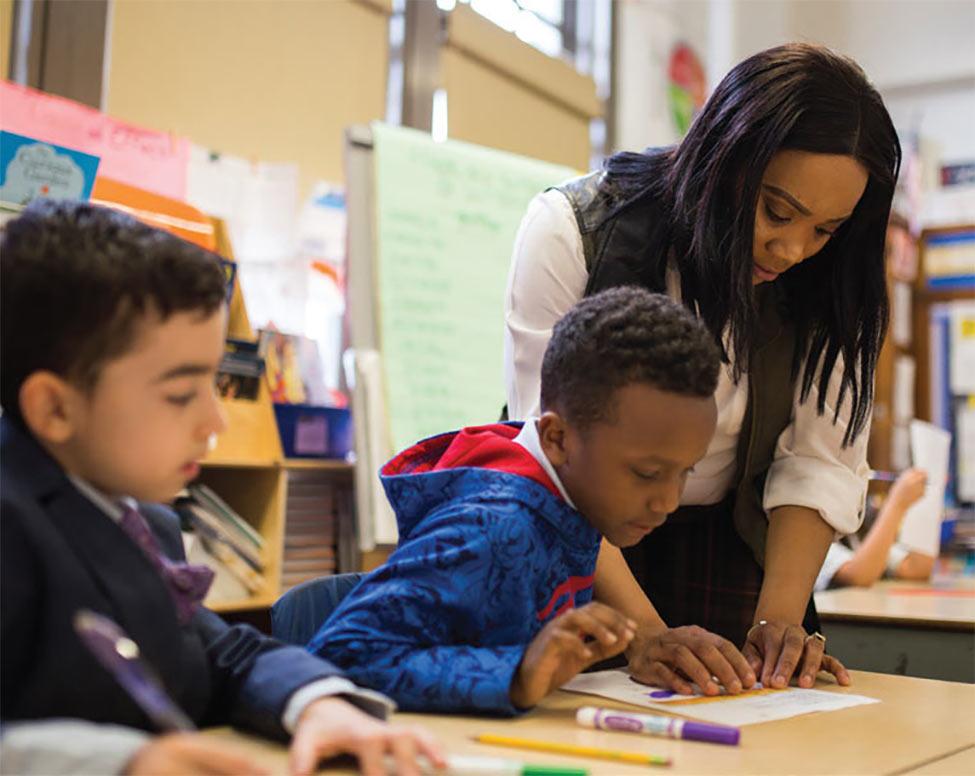
With the support of this NYS Department of Education grant, Pace’s School of Education will recruit, support, and retain candidates from historically underrepresented communities into the teaching profession, who are highly qualified, value equity, and reflect diversity in today’s classrooms, particularly in high-need schools where there are local teacher shortages.
More from Pace Magazine
The Great Resignation. Remote Work. COVID-19 and the future of work. You’ve heard it all, but what does it mean? Talent Management expert Ibraiz Tarique, PhD, breaks down the ever-evolving relationship between employers and the people who truly make workplaces tick.
Through the U.N. Millennium Fellowship, three Pace students are innovating the way food insecurity is addressed on campus with the Fare Trade program.
Across our campuses, we’re looking to the future—innovating new programs, forging new partnerships, preparing our students for the workplace of tomorrow. It’s time for Pace Magazine to get a fresh new look and feel, too.
The Song As Struggle
Researchers at Pace dive deep into hip hop’s emotional undercurrents.
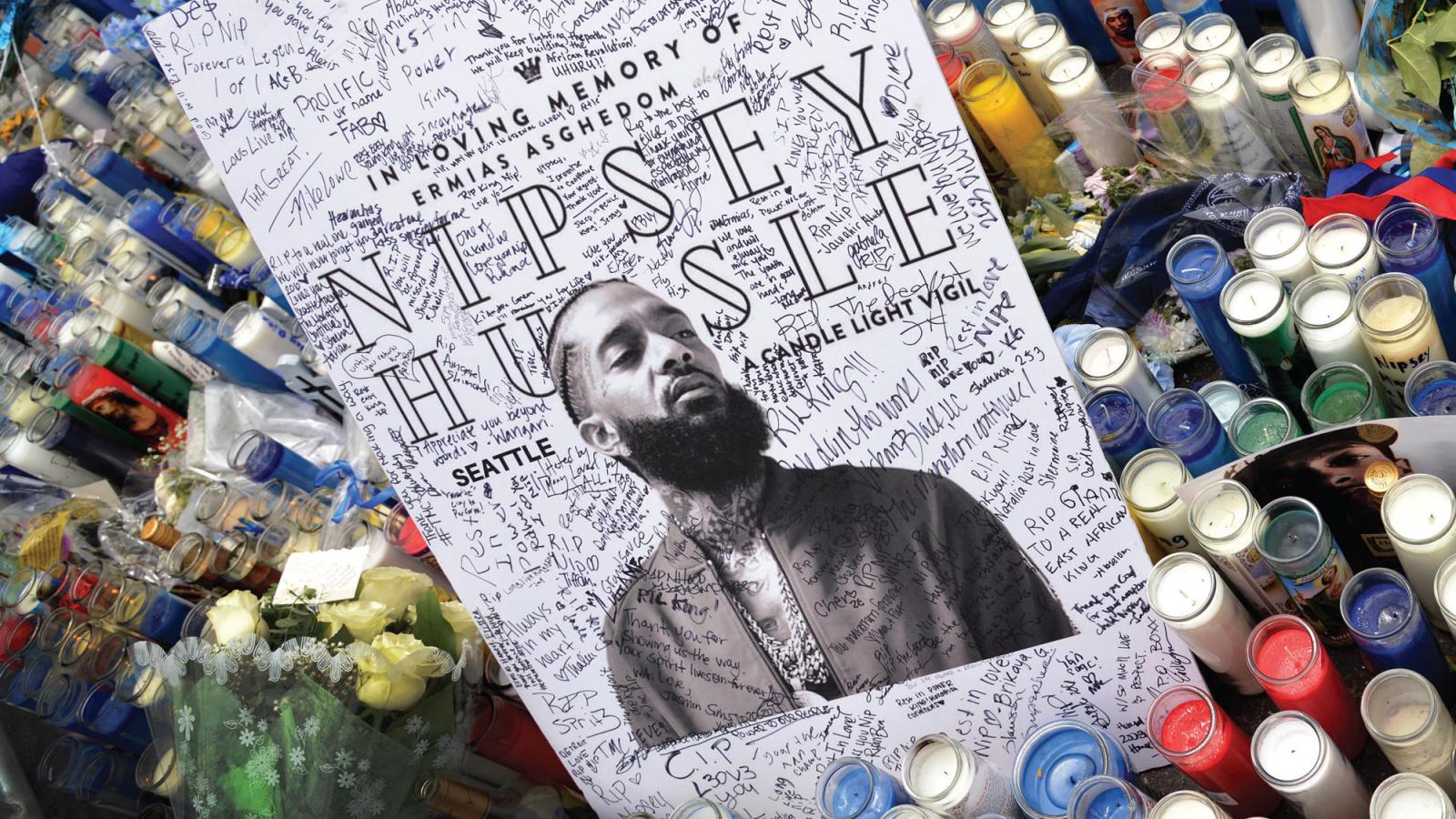
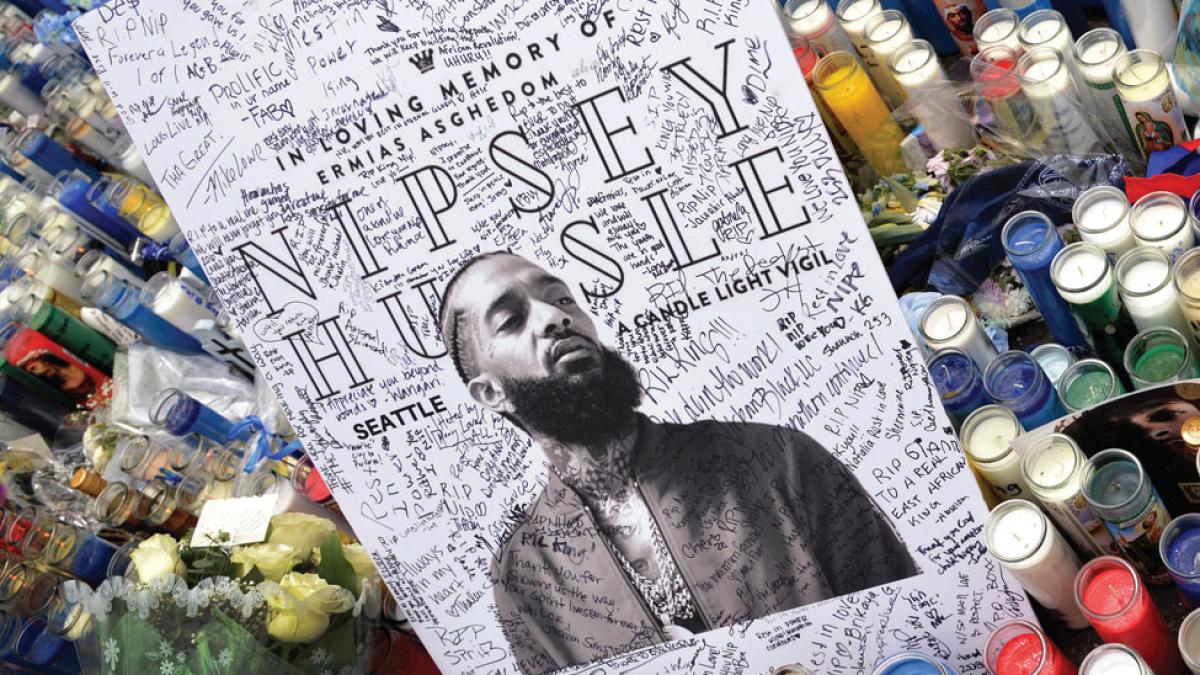
“Hip hop, in a lot of ways, is a manifestation of pain,” says Justin Winley, a 2021 graduate who majored in Film and Screen Studies. “It’s a manifestation of the struggle, whether that be the day-to-day economic struggle of living in an impoverished community or the struggle against ‘The Man.’”
Winley, working together with Assistant Professor of Communication Studies Melvin Williams, PhD, and independent researcher Justin Causey, used that insight as the basis for an innovative academic research project exploring the role of hip hop music in conveying grief, generational pain, and other emotions that might otherwise go unexpressed among Black men. Their researched was published this past winter in the peer-reviewed Journal of Hip Hop Studies.
Listen While You Read:
Hit play to listen to our Spotify playlist of songs examined by Williams and Winley.
As part of the research team, Winley and Williams conducted an investigation, framed by critical race theory and gender role conflicts, of twenty-six rap tribute songs written by twenty-eight Black male artists in the aftermath of the killing of rapper, entrepreneur, and activist Nipsey Hussle.
“We used this hip hop cultural moment— the death of Nipsey Hussle—to raise larger conversation about this epidemic of gun violence and its devastation of not only the Black community, but Black men specifically,” says Williams, whose areas of research focus on Black representation in pop culture, queer studies, and media.
Hussle, the stage name of Ermias Asghedom, was a Grammy-nominated West Coast rapper who was fatally shot outside his Marathon Clothing store in Los Angeles in 2018. A community leader who was an advocate for STEM education and worked to curb gun violence, he was 33 years old when he died. Following his death, more than 50 murals dedicated to his memory appeared in LA, book clubs popped up that focused on works he had referenced in interviews and in his lyrics, and dozens of tribute songs were produced by other rappers.
“We used this hip hop cultural moment— the death of Nipsey Hussle—to raise larger conversation about this epidemic of gun violence and its devastation of not only the Black community, but Black men specifically,” says Williams.
The concept of tribute songs is nothing new to the hip hop community—in fact, in 1997, following the murder of Christopher “The Notorious B.I.G.” Wallace, artists Sean “Diddy” Combs and Wallace’s widow, Faith Evans, released “I’ll Be Missing You.” A few others to mull over include Jay-Z’s “The City is Mine,” Bone Thugs-N-Harmony’s “Tha Crossroads,” and 2Pac’s “Life Goes On.”
“We really wanted to examine how Black male rappers were using these rap tribute songs to commemorate the grief of being a homicide survivor,” says Williams. “In so doing, we start a larger conversation about how the Black community grieves, how Black men grieve, and how they communicate these narratives which are so vital to the grieving process.”
In Williams and Winley’s research partnership, the pair began analyzing nearly 30 tribute songs, each one memorializing the life and legacy of Nipsey Hussle.
They identified common themes in the tribute songs about survivorship, about anger, and about the desire to seek vengeance. They saw that Black male rap artists use the rhetorical power of rap tribute songs to engage with their complex bereavement processes, advance vital counternarratives, and offer rich criticisms of gun violence, internalized racism, poverty, and systemic oppression. They also found that artists use these songs to explore Black men’s mental health experiences in the face of repeated exposure to violence, death, and homicide.
“When we see examples of gun violence, particularly in the Black community, it’s always a very charged conversation,” says Winley. “What’s great about being able to do this research is that it takes those emotions into account, but it doesn’t let them rule the discourse.”
Photo by Chelsea Guglielmino/Getty Images
More from Pace Magazine
We're reaffirming our commitment to cutting-edge academics, moving up in the rankings, earning grants, and paying it forward. All this and more in the latest edition of 10 Things to Inspire You.
With the help of a nearly $2M federal grant, this inaugural cohort of nursing students is poised to change the face of patient care.
Pace's Producing the Documentary course gives students a hands-on experience in filmmaking—from pre-production, to shooting on location, editing, and so much more. Read how student Adam Ng got his feet wet (literally) this semester while filming the latest Pace Doc.
Mentoring Matters
Shades has been providing community and support to women and femmes of color through mentorships, outings, and discussion groups for over 15 years. Learn about its impact from coordinator Denise Santiago, PhD, and alumni facilitator Nina Riley '22.
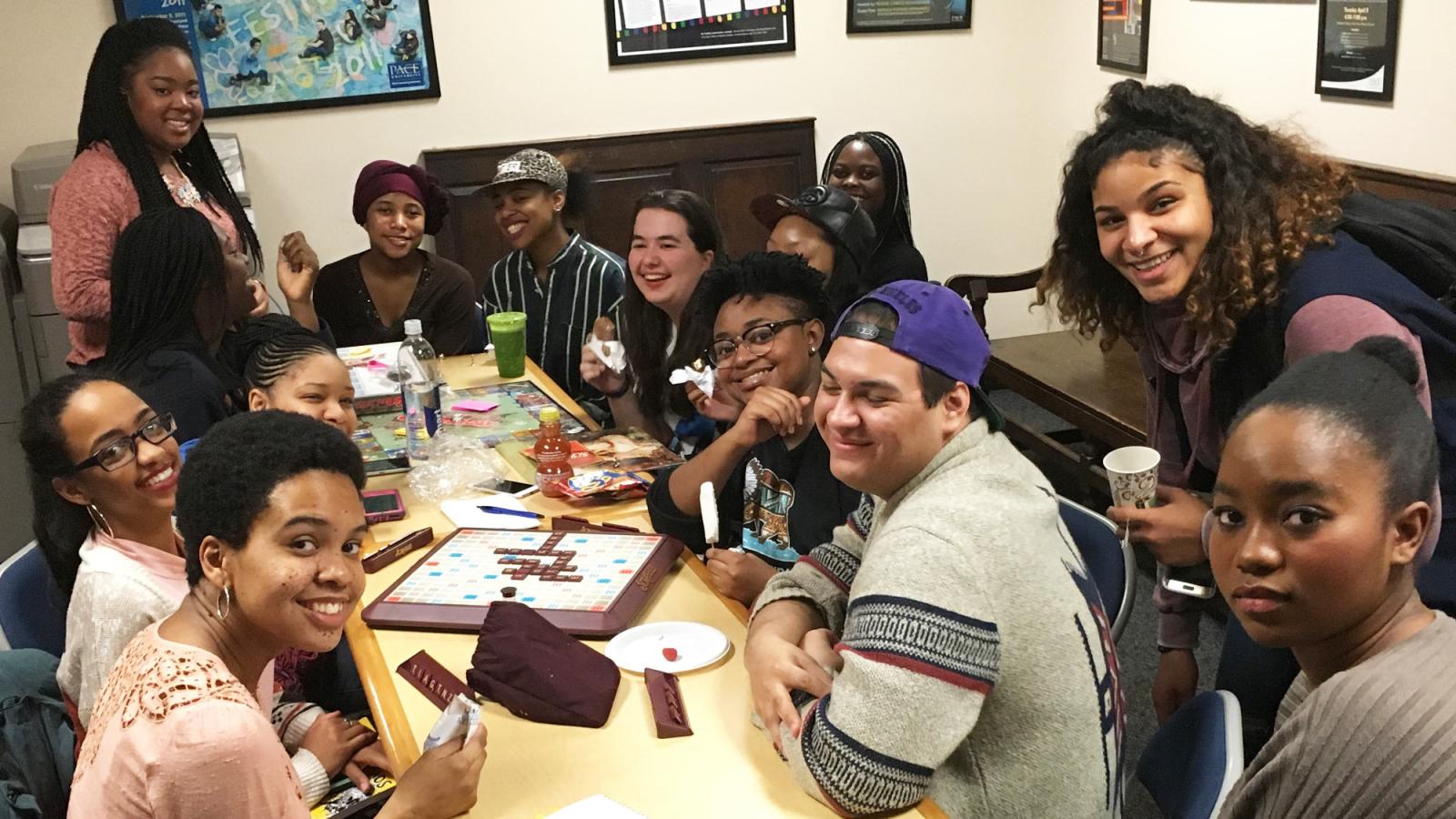
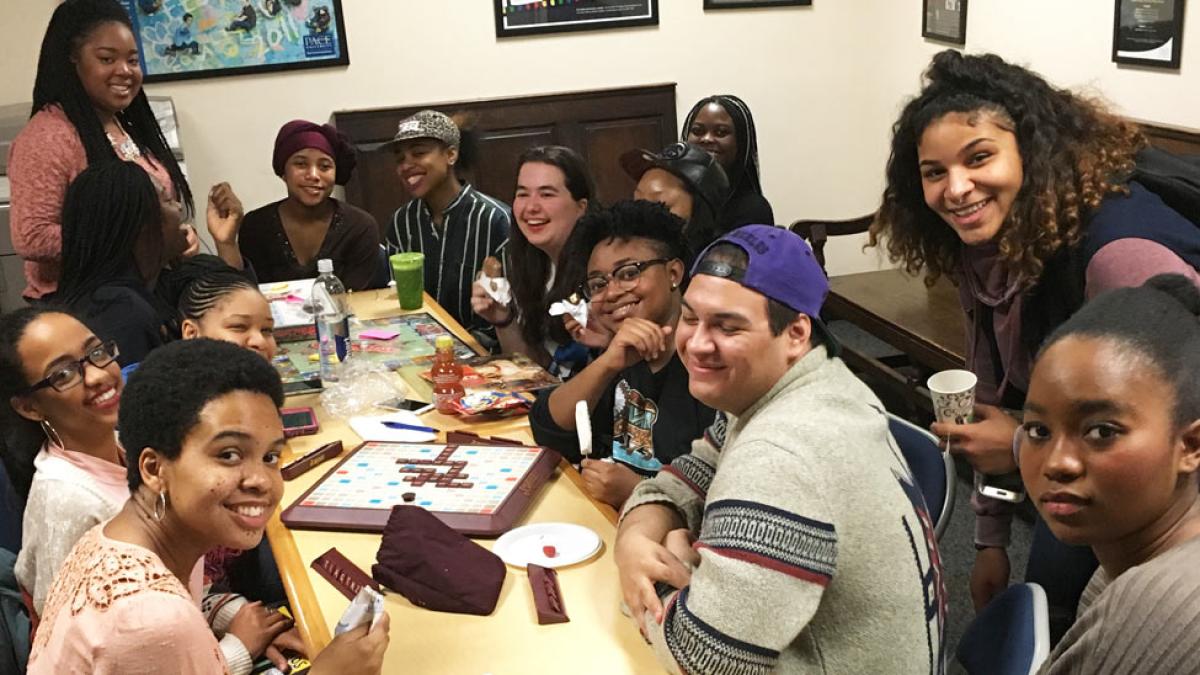
For 15 years, members of the Shades Women of Color Collective on Pace’s NYC Campus have been meeting, talking, and uplifting one another.
“Shades is a mentoring program but in a nontraditional sense,” says Denise Santiago, PhD, director of the Office of Multicultural Affairs and coordinator for the collective. “It’s a support space for Black and Latina women, and all women are welcome.”
The weekly discussion groups tackle everything from social media, mental health, wellness, leadership, politics, and more. But it’s not just talk. The women of Shades attend outings together, organize special events, and share professional opportunities.
"If you keep showing up, we keep showing up.”
Nina Riley ’22 came to Shades as a student and grew into a role as a facilitator. She finds that having a space to share experiences can lead to real change. “People value transformative storytelling,” she says. “Students come in and share their hair stories, or stories related to other topics, and we learn from each other.”
At the heart of Shades is a sense of community. “We welcome all women and femmes into Shades,” Riley says. “If you want to be a part of the conversation, you are welcome. And we really do create a family. If you keep showing up, we keep showing up.”
More from Pace Magazine
Title IX is best known for transforming collegiate athletics in the United States—and, from there, all of sports. But that was not its original goal. Title IX of the Education Amendments of 1972, as it is formally known, was designed to open doors for women across higher education. Learn more about it.
We're reaffirming our commitment to cutting-edge academics, moving up in the rankings, earning grants, and paying it forward. All this and more in the latest edition of 10 Things to Inspire You.
Researchers at Pace dive deep into hip hop’s emotional undercurrents.
Making Great Strides in Healthtech
Pace's faculty are working across disciplines to address the health needs of today.


From CT scans to at-home COVID tests, technology is revolutionizing healthcare. By working across disciplines, faculty at Pace are turning groundbreaking ideas into reality.
Juan Shan, PhD, an associate professor of computer science in the Seidenberg School of Computer Science and Information Systems, is focused on applying artificial intelligence and machine learning to analyzing medical imaging—things like breast ultrasounds and knee MRIs. The basic idea is to take advantage of those advanced models in machine learning and apply those to the medical domain to help solve medical problems.
“In computer science, we know more about machine learning and computer vision techniques than about medical problems,” Shan says. “But we want to apply these techniques to help doctors solve the medical domain problems.”
Shan and her students are using machine learning and computer vision techniques to help doctors solve problems detecting the precise details of a tumor more accurately and efficiently or providing a second opinion on the severity of knee osteoarthritis.
“My students here at Pace get involved in my research projects,” she says. “Research informs my teaching, and I can always bring new ideas back to my classroom and discuss them with my students.”
Shan and her doctoral students design Computer Aided Diagnosis Systems (CADs), systems that are programmed to do particular tasks—pinpoint location, measure joints, estimate size. Her primary focus is developing robust and efficient CAD algorithms to help doctors analyze medical images, discover distinguishing features, and classify data utilizing machine learning methods.
In one recent research endeavor, for example, Shan created a system where a computer was able to estimate the severity of osteoarthritis in a hand after learning how to read and interpret thousands of X-rays—a technique that Shan says helps save on labor and time for medical professionals that would otherwise be manually diagnosing the severity of the osteoarthritis.
“Research informs my teaching, and I can always bring new ideas back to my classroom and discuss them with my students.” —Juan Shan, PhD
At the College of Health Professions, Assistant Professor John Damiao, PhD, has spent the past several years figuring out how to leverage gains in scanning technologies to build customized wheelchairs tailored toward the needs of an individual user. His work makes the wheelchairs more comfortable, and potentially helps reduce the risk of future injury.
“Traditionally, the wheelchair user is seated in a molding bag that makes an imprint of their shape,” says Damiao. “The molding bag is hardened, and that bag shape is scanned, sent off to a company and they make a cushion from that imprint.”
But his work is driving a paradigm shift in how wheelchair seats are constructed.
“The problem with the traditional method is that the person is sitting in a loaded fashion, and their body contours are being distorted from sitting in a loaded fashion,” he says. “The innovation in my research is scanning the person directly, or in an unloaded position, which should make for a more accurate custom contoured seat.”
Custom contoured seating refers to wheelchair seating systems to fit people with severe deformities—whether its postural or a skeletal deformity, and they can’t sit in a typical linear wheelchair seating system because it would cause discomfort, or eventually cause pressure ulcers because of the mismatching of their shape to what is a typical wheelchair seat shape, explains Damiao.
Pressure injuries kill 60,000 people are a year and are, as Damiao describes, a “$10 billion per year problem.” Damiao’s inventive use of custom-contoured seating utilizes ever-improving technology to potentially save lives.
As a 21st century occupational therapist, Damiao understands that, while academic research is vital and will continue to be vital, it is just as important to be able to leverage technological advances to implement changes rapidly. He hopes that increased interdisciplinary collaboration—for instance, better collaboration between those developing healthcare technologies and researchers—can help take the theoretical into the practical much faster, and thus positively impact lives.
As per the work of Shan and Damiao, it seems that when it comes to the intersection of health and tech, Pace is certainly building an effective algorithm.
More from Pace Magazine
Researchers at Pace dive deep into hip hop’s emotional undercurrents.
Through the U.N. Millennium Fellowship, three Pace students are innovating the way food insecurity is addressed on campus with the Fare Trade program.
The Great Resignation. Remote Work. COVID-19 and the future of work. You’ve heard it all, but what does it mean? Talent Management expert Ibraiz Tarique, PhD, breaks down the ever-evolving relationship between employers and the people who truly make workplaces tick.
21st Century Academics
Our innovative new programs in human centered design, health informatics, and more are ensuring that today’s Pace students will be tomorrow’s leaders in emerging industries.


Pace has been preparing students for the demands of an evolving job market for more than 115 years. Now we’re creating new academic programs that will help our students succeed in the careers of the next 115.
It’s part of the commitment to academic innovation in our new strategic plan, called Pace Forward, that ensures we meet the needs of today’s students and employers.
In 2021, the Seidenberg School of Computer Science and Information Systems launched a master’s program in Human Centered Design. It’s a discipline that blends art, design, psychology, and technology to focus on how people interact with machines. For some considering grad school, this degree can mean a significant value-add to a career in tech not only now, but especially during the transition into Web 3—the umbrella term used to describe emerging technologies such as the metaverse, blockchain, and NFTs.
Together with the College of Health Professions (CHP), Seidenberg is also offering a new master’s degree in Health Informatics. It’s an interdisciplinary program designed to launch careers at the intersection of health and technology—ranging from telehealth, to artificial intelligence, to software development, and much more.
“Healthcare technology is bringing us into an exciting world of truly personalized medicine and healthcare,” says Jonathan Hill, DPS, dean of Seidenberg. “Right now, faculty from CHP and Seidenberg are working with students on innovative, interdisciplinary research projects that seamlessly blend healthcare and technology in ways that improve the healthcare experience not just for patients, but for medical professionals as well.”
Finally, the School of Education has a new master’s program in Early Childhood Development and Learning. This new degree program draws upon all the latest advancements in the field to best prepare educators to succeed in the ever-changing education landscape— ensuring that while the educational tools and strategies may be different, the quality will continue to be of the highest caliber.
More from Pace Magazine
We're reaffirming our commitment to cutting-edge academics, moving up in the rankings, earning grants, and paying it forward. All this and more in the latest edition of 10 Things to Inspire You.
Pace's faculty are working across disciplines to address the health needs of today.
Through the U.N. Millennium Fellowship, three Pace students are innovating the way food insecurity is addressed on campus with the Fare Trade program.
Setter Basketball Returns to the Big Dance
It was a banner year for Pace basketball. Both the men's and women's teams earned trips to the NCAA tournament, and the women's team made quite a deep run.
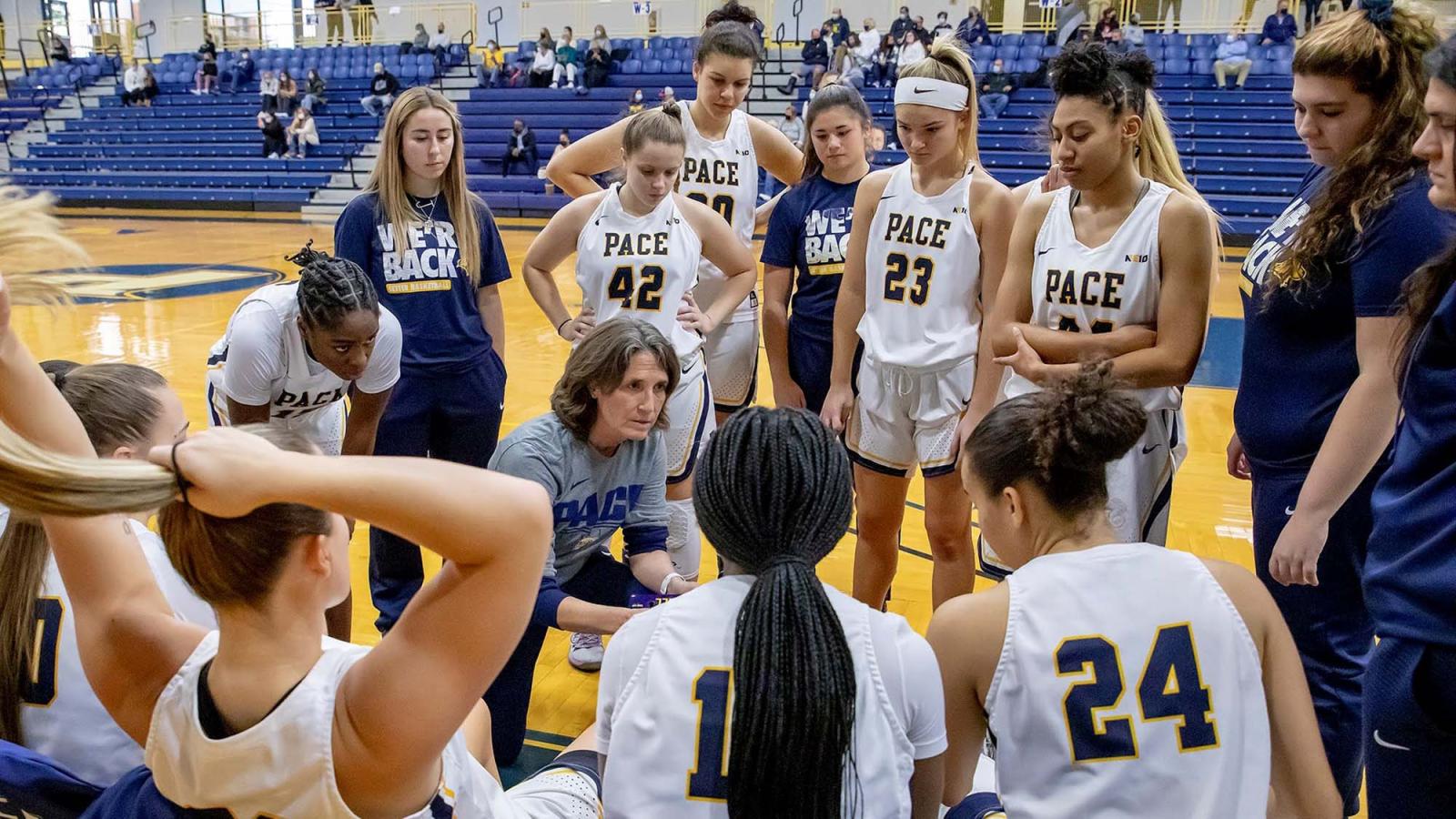
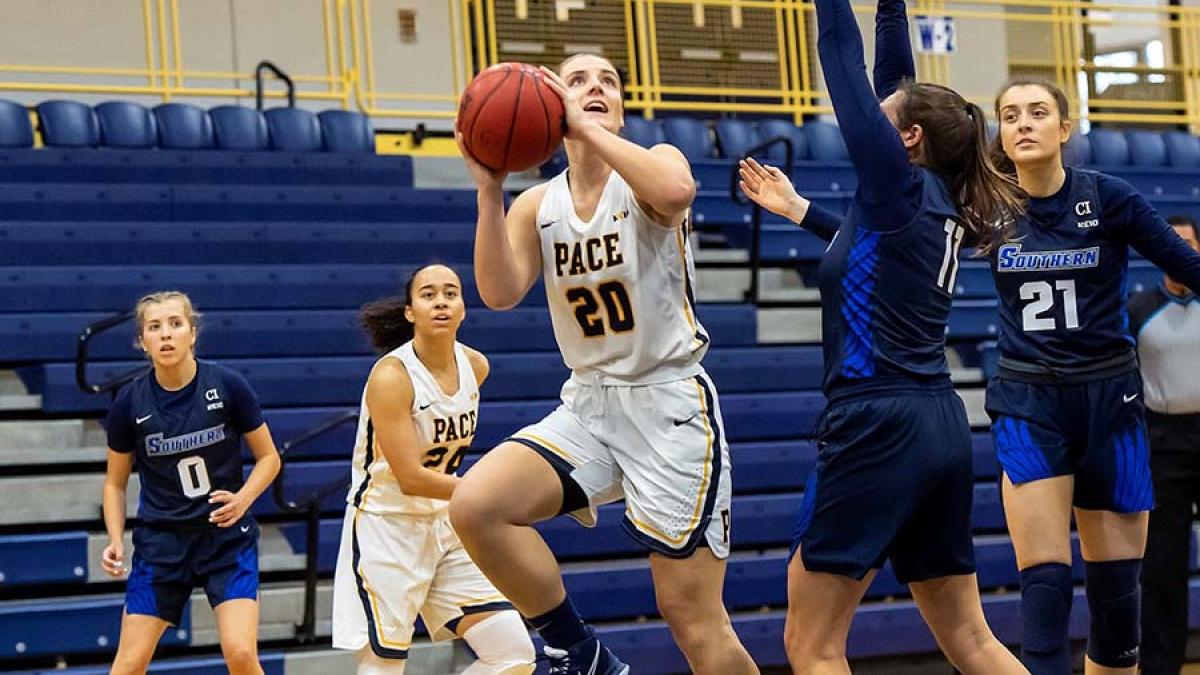
Not familiar with the Big Dance? We mean the NCAA tournament. The men’s and women’s basketball teams represented Pace on the national stage in 2021–22, both earning at-large bids to their respective NCAA tournaments.
The women, led by head coach Carrie Seymour and All-MBWA Division II Player of the Year Lauren Schetter ’21, ’24, were crowned the regular season champions of the NE-10 Southwest Division, and advanced to the Elite Eight for the first time since 2001 and for only the third time in school history.
The Setters also led Seymour, who just finished her 30th season at the helm, to career win number 500 this season; she currently sits at 35th on the all-time Division II wins list.
Head coach Matt Healing and the men’s basketball team won the NE10 Southwest Division Regular Season title for the first time in program history as the Blue and Gold went unbeaten divisionally. Healing and the Setters won their first NCAA Tournament game since 2002 before losing in overtime to Bentley University.
More from Pace Magazine
Esports has arrived at Pace as our 15th varsity sport. Get your introduction to this booming industry, our new Esports director, and the students who have been passionately dedicated to the program since its days as a student club.
Through Blue CoLab, John Cronin is helping to build a future in which our drinking water is truly clear.
At 14 years old, Shahab Gharib is not your typical Pace student. Here is his extraordinary story.
Shaping Healthcare's Next Generation
With the help of a nearly $2M federal grant, this inaugural cohort of nursing students is poised to change the face of patient care.
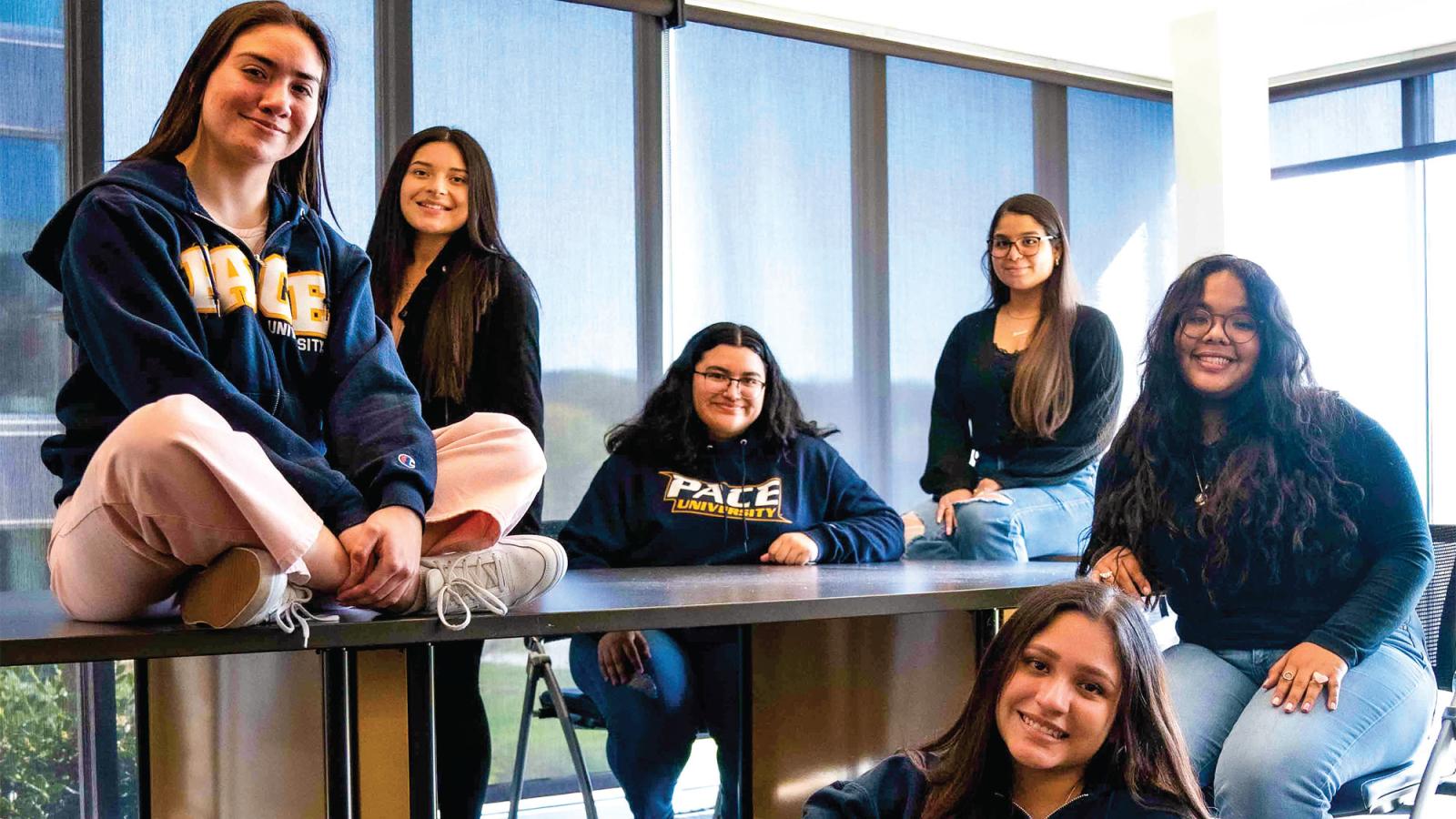
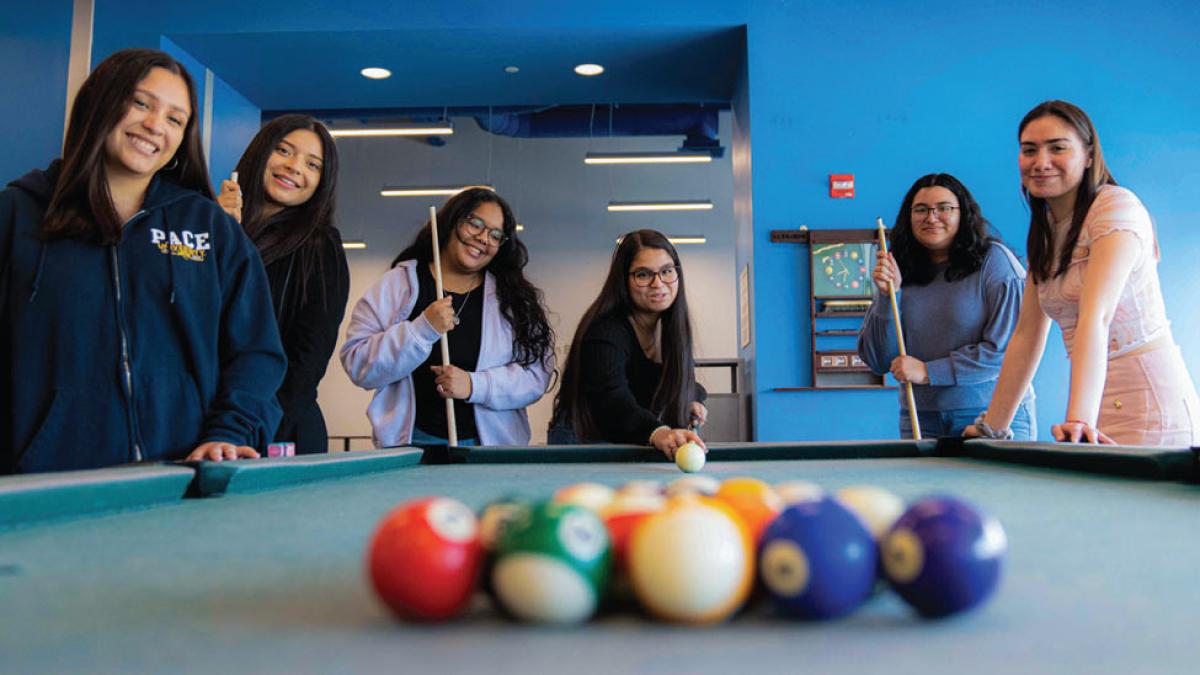
“For the more than 50 years that it’s been in existence, Pace’s Lienhard School of Nursing has been committed to serving diverse communities,” says Rhonda Maneval, DEd, RN, vice dean of Pace’s College of Health Professions. “Part of that commitment is educating nursing students from diverse backgrounds in order to create a nursing workforce that can better address the health care needs of our diverse communities and improve health outcomes for all people.”
The COVID-19 pandemic served as a stark reminder that people from underserved communities suffer from severe disparity in health outcomes—due in part to lack of access, linguistic and cultural barriers, and economic and job conditions. For Maneval and the other leaders at Pace’s College of Health Professions (CHP), that experience emphasized the need to attract and support more diverse nursing students at Pace.
Last summer, CHP’s Lienhard School of Nursing received a nearly $2 million federal Nursing Workforce Diversity grant, funded through the US Health Resources and Services Administration (HRSA). The grant works to increase educational opportunities and retention rates for first generation college students from underrepresented ethnic and racial minority groups in nursing. The grant—facilitated through CHP’s innovative STEPS to Success program and authored by Maneval—provides support, scholarships, mentoring, tutoring, wellness workshops, and resiliency training aimed at preventing burnout and promoting academic success for nursing students.
For the nine nursing students who have just completed their first year as part of the inaugural HRSA cohort, the support, guidance, and mentorship they’ve received through the program have provided unparalleled opportunities.
“Many minority groups, especially those who are of Hispanic or Latin descent—like myself—tend to avoid health care institutions because of the fear of the language barrier that is so prevalent when trying to receive care,” says HRSA scholar Joeleena Hernandez ’25.
A Higher Calling
“My first ‘ah-ha’ moment was when I was nine-years-old,” says Alessandra Gutierrez ’25, whose grandmother, Tita, lived with her growing up in Ossining, New York. “She had broken her dominant arm and was diabetic, so she needed assistance with her insulin and testing her glucose levels. That was when I realized I loved helping others and wanted to help them as I did with my grandmother.” That call to caring is what eventually brought Gutierrez to Pace.
Sofia Garcia ’25 had never considered a career in health care until her senior year in high school, when her father suffered a medical emergency that left him fighting multiple organ failure for weeks. “I observed how attentive the nurses were and the difference they were making in my dad’s recovery, and realized I wanted to have that same impact on someone else’s life as well,” she says.
“I tell the students all the time, ‘We need you to be registered nurses, but we also need you to be leaders. We need you to go out there and take charge and lead.’ And that’s something we do well—we give you the skills to begin that leadership journey.”
The impact these students will have after graduation doesn’t begin and end with just patient care—they’re being educated to critically examine care in the clinical environment and strive for leadership roles within the nursing industry to carry the wave of change forward to the nurses who will come after them.
“Part of this program is really introducing the scholars to nursing leaders, because we need them to be the next generation of leaders,” says Maneval. “I tell the students all the time, ‘We need you to be registered nurses, but we also need you to be leaders. We need you to go out there and take charge and lead.’ And that’s something we do well—we give you the skills to begin that leadership journey.”
Total Immersion
Scholars in the nursing diversity program come from underrepresented racial and ethnic groups in nursing, and they must also be first-generation students, meaning they are the first in their family to attend college. While going off to college is a feat in itself, doing so as a first-gen student presents its own set of challenges. To help ease students and their families into college life, the scholars had the opportunity to participate in a week-long summer immersion program that introduced them to campus, their future faculty, advisors, and alumni who were working in area hospitals.
“Being part of the summer immersion program allowed me to meet students who were experiencing the same things as me,” says Evelyn Cabrera ’25, who is also in the Pforzheimer Honors College. “I was more comfortable going into the school year because I felt as if I already had a group of people I could rely on. Being part of a cohort really allowed us to build connections with faculty and other students to create a big family who supports one another.”
During that week, students in the cohort lived together on campus, met their peer mentors (nursing students further along in Pace’s nursing program), got connected with key resource offices at Pace, and started building connections with each other and their individually assigned faculty mentors.
And it wasn’t just the scholars who built connections—their families were invited to campus to meet each other, meet their student’s faculty and advisors, and learn about how the program will impact their children. “I’ve always said that people who choose nursing are very, very special people, and we wanted to communicate that with the families, and we wanted them to know how challenging nursing school can be,” Maneval says. “We invited the families to be cheerleaders and supporters for their students because we know that their students will sometimes feel overwhelmed. Having families know that these things are going to happen in advance means we can prepare them to help their students in positive ways.”
Now a year into the four-year program, students and their families have already felt the impact that this type of comprehensive and immersive support can have on student success. “Everything is kind of new to us, in terms of college, but I think we’ve both adjusted well and are doing great so far,” says Hernandez about her and her mother. “My mom is so happy and excited for all the new things I’ve learned and been able to do and accomplish in the program. She always says that my hard work will pay off, and this opportunity is one thing that proves it.”
It Takes A Village
“This grant gave us a great opportunity to capitalize on the strengths that we already had,” explains Maneval. “We were able to say to HRSA ‘You should invest in us because we have a good track record in educating diverse students, but we need help to do more.’”
As part of the funding, there is a deep focus on student retention and persistence to graduation—meaning no missed semesters, no drop-outs, and an always-forward academic progression for students. And, of course, one of the most important facets of the grant is the financial support from which the students benefit.
“It’s important, because not only does the scholarship say to the student that they are being invested in and that we believe in them, but it also helps to limit the amount of outside work they need to engage in,” Maneval says. “We know that many students are working lots of hours outside of academics, and that can be a major barrier to success.”
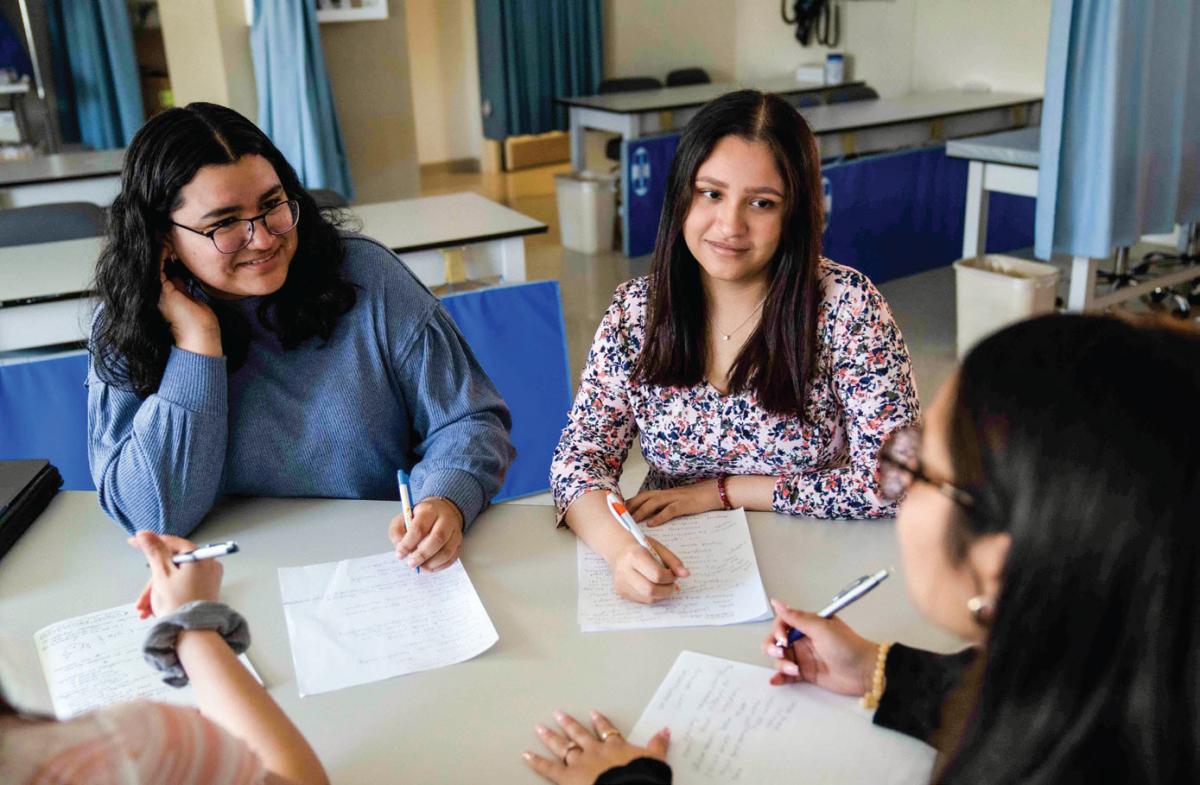
For nursing students in particular, the level of academic commitment required is extremely high. Between full class loads, labs, and on-site clinical rotations, it’s an intensive and full-time effort. To help these students balance it all, peer and faculty mentors step in to offer guidance, moral support, and serve as sounding boards.
“It was incredibly reassuring to see an adult nurse who succeeded in her journey and still had time to dedicate to her relationships with her family and friends,” says Garcia, who was able to travel with her faculty mentor to Utah for the National Student Nurses Association Convention. “It was also delightful to talk to her about her experiences growing up.”
“We all were able to build great relationships and bonds with our peer mentors,” Gutierrez says. “They’re all nursing students who are one or two years older than us and it’s great to be able to talk to someone who has walked in our shoes.”
And it’s not just the people at Pace who are making a difference in student outcomes—it’s their families, too. By getting them involved in the process early, it paves the way for understanding and compassion when the road to graduation gets a bit rocky.
“They realize that being a nursing major is hard work, but they are there with me every step of the way to remind me that I am capable of becoming a nurse."
“My family was very proud of me when I started this journey and still are,” says Jahaira Pereira ’25. “They realize that being a nursing major is hard work, but they are there with me every step of the way to remind me that I am capable of becoming a nurse. They help keep me relaxed and calm when things get to be a handful and without my family I wouldn’t be where I am now.”
“There’s real intentionality behind involving so many people and resources in the success of these students,” says Maneval.
“When we designed the program, we looked at what the best evidence was for the things that seem to make the most difference to the success of students. And in four years, we’ll be evaluating what really worked and what didn’t and use that information and those strategies to support all of our students in the best ways.”
It All Adds Up
Prior to their junior year, these scholars will spend time in externship placements at partner hospitals in the Westchester area. They’ll be earning wages and working closely with registered nurses in areas that are of interest to them as they begin to explore future career paths.
“Again,” says Maneval, “these placements are another strategy to build confidence and skill sets.”
“I am very thankful for the grant,” says Pereira. “It’s helped me be able to afford to attend school, but also helped me realize the impact I am making for the future of nursing. Being able to relate with my fellow students about how we want to make the representation of Hispanic nurses larger just helps to show the impact everyone in the program wants to make in the future. Overall, I hope that this grant will impact the industry and patient care by making more of a diverse community in the nursing community.”
For students like Hernandez, the grant has helped remove obstacles that she may have otherwise faced as a first-gen student entering a challenging program like nursing.
“I hope that more people in minority groups are propelled in the health and patient care industry because their contribution is so important to promoting wellness everywhere,” she says. “The HRSA program and grant is truly aiming to combat obstacles and barriers to education and access to health care and I have no doubt we can all achieve it.”
More from Pace Magazine
Esports has arrived at Pace as our 15th varsity sport. Get your introduction to this booming industry, our new Esports director, and the students who have been passionately dedicated to the program since its days as a student club.
At 14 years old, Shahab Gharib is not your typical Pace student. Here is his extraordinary story.
We're reaffirming our commitment to cutting-edge academics, moving up in the rankings, earning grants, and paying it forward. All this and more in the latest edition of 10 Things to Inspire You.
